A well-planned raised garden bed along a fence can do much more than just grow vegetables—it can transform an overlooked part of your yard into a productive and visually appealing green space. Whether you're working with a small backyard or looking to add some structure to a long stretch of fencing, these ideas open up creative ways to use vertical and horizontal space efficiently. Raised garden beds offer better soil control, improved drainage, and easier access for planting and harvesting. They also help create defined zones in your outdoor space. From maximizing sunlight exposure to enhancing curb appeal, the potential of these beds extends far beyond basic gardening. Explore these 25 raised garden bed along fence ideas and discover how you can bring new life to your fence line.
1. Tiered Wooden Beds for a Cascading Look
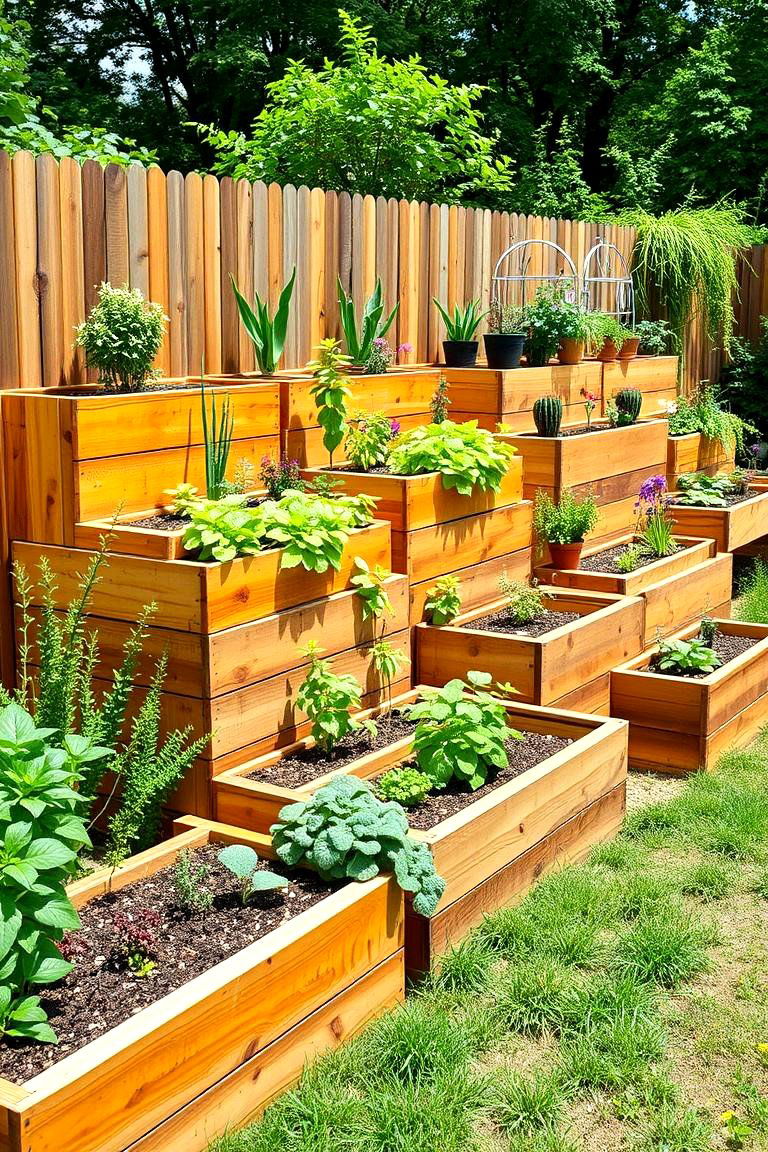
Tiered raised beds bring both beauty and function when placed along a fence. Their cascading levels create visual interest while making it easy to grow a variety of plants with different root depths. You can place taller plants on the top level and trailing herbs or flowers on the bottom. This setup not only maximizes growing space vertically but also adds a dynamic layered effect to your fence line. Consider using treated or rot-resistant wood for longevity, and leave enough space between levels for airflow and easy access.
2. Narrow Raised Beds for Tight Spaces

When space is limited, a narrow raised bed along the fence can still yield big benefits. These slim beds—sometimes as little as 12 inches wide—are perfect for herbs, leafy greens, or flowers. The fence provides support and backdrop, while the compact design keeps pathways clear. Line the interior with weed barrier fabric and fill with quality soil to make the most of every inch. This minimalist approach is especially handy in urban yards or side alleys.
3. Raised Beds with Trellises for Climbing Plants
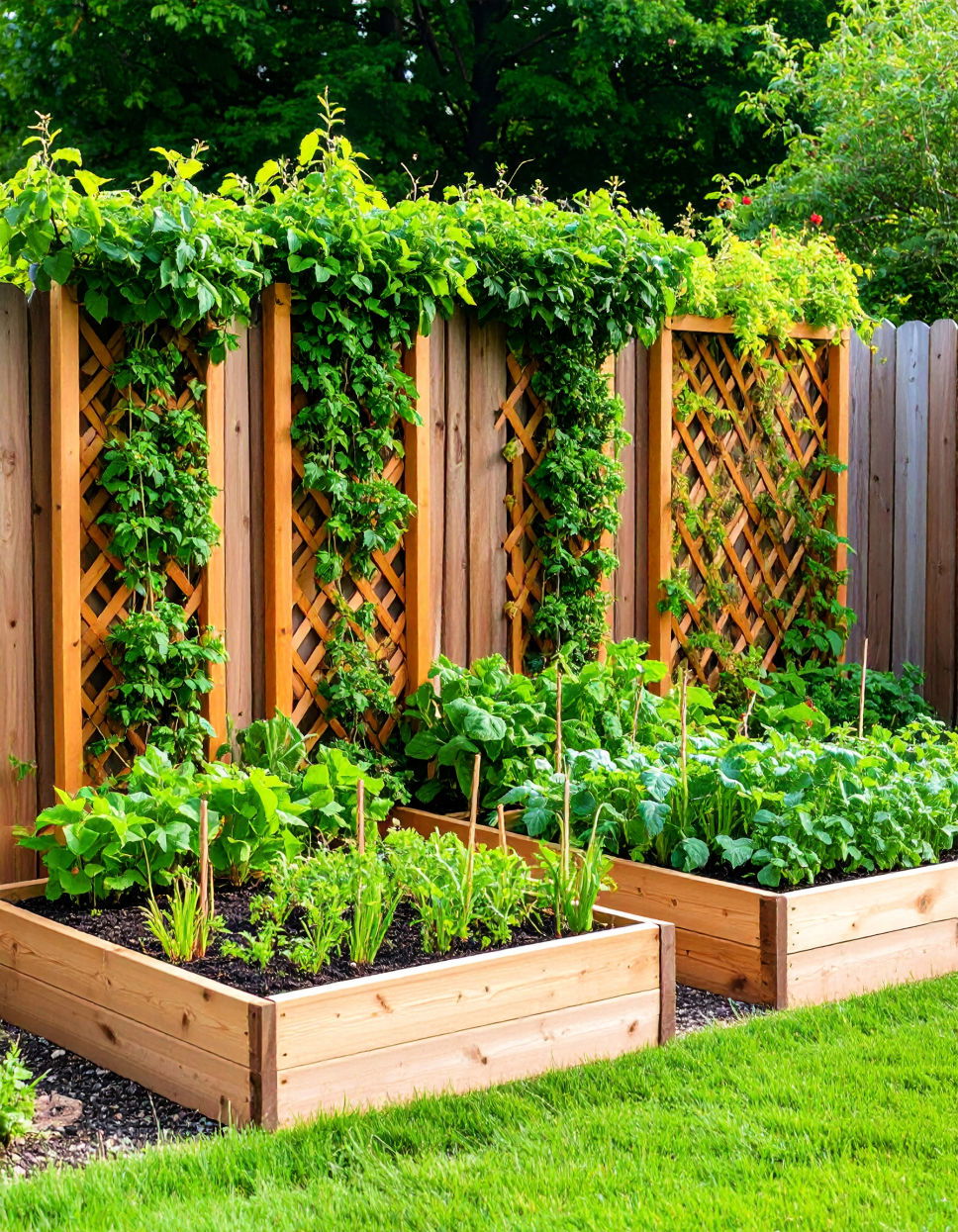
Adding trellises to your raised beds allows vertical gardening right against the fence. Vining plants like tomatoes, peas, cucumbers, or beans thrive with this kind of support. The fence offers stability for the trellis and helps keep vines contained and organized. This is a smart way to grow more in less space and create a living green wall that softens the look of hard fencing. Use materials like lattice, wire mesh, or even wooden slats for a natural touch.
4. Corner L-Shaped Beds to Define Fence Ends
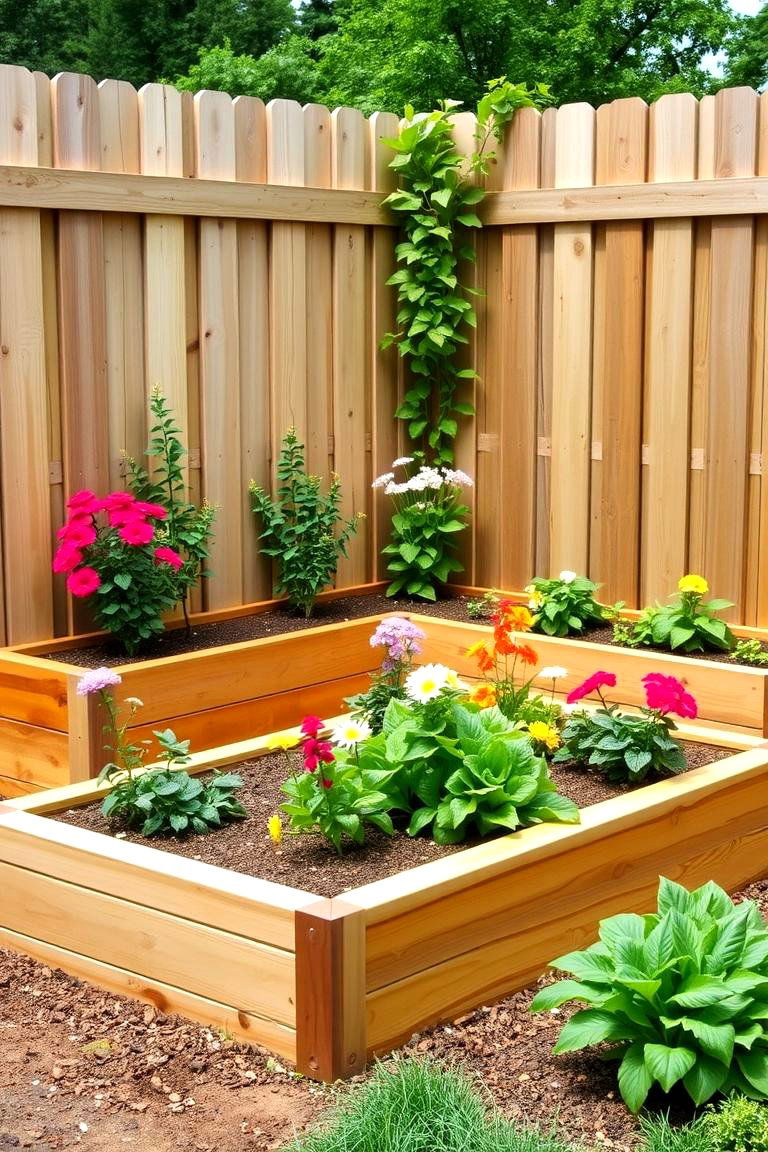
L-shaped raised beds are perfect for fence corners where two walls meet. They help soften sharp angles and make good use of awkward or unused zones. These beds provide more planting area than a single rectangular bed and can act as natural dividers between garden zones. Build them tall for visual weight or keep them low for subtlety. They work great for companion planting too—pair flowers with veggies for both beauty and pest control.
5. Painted Raised Beds to Add Color and Personality
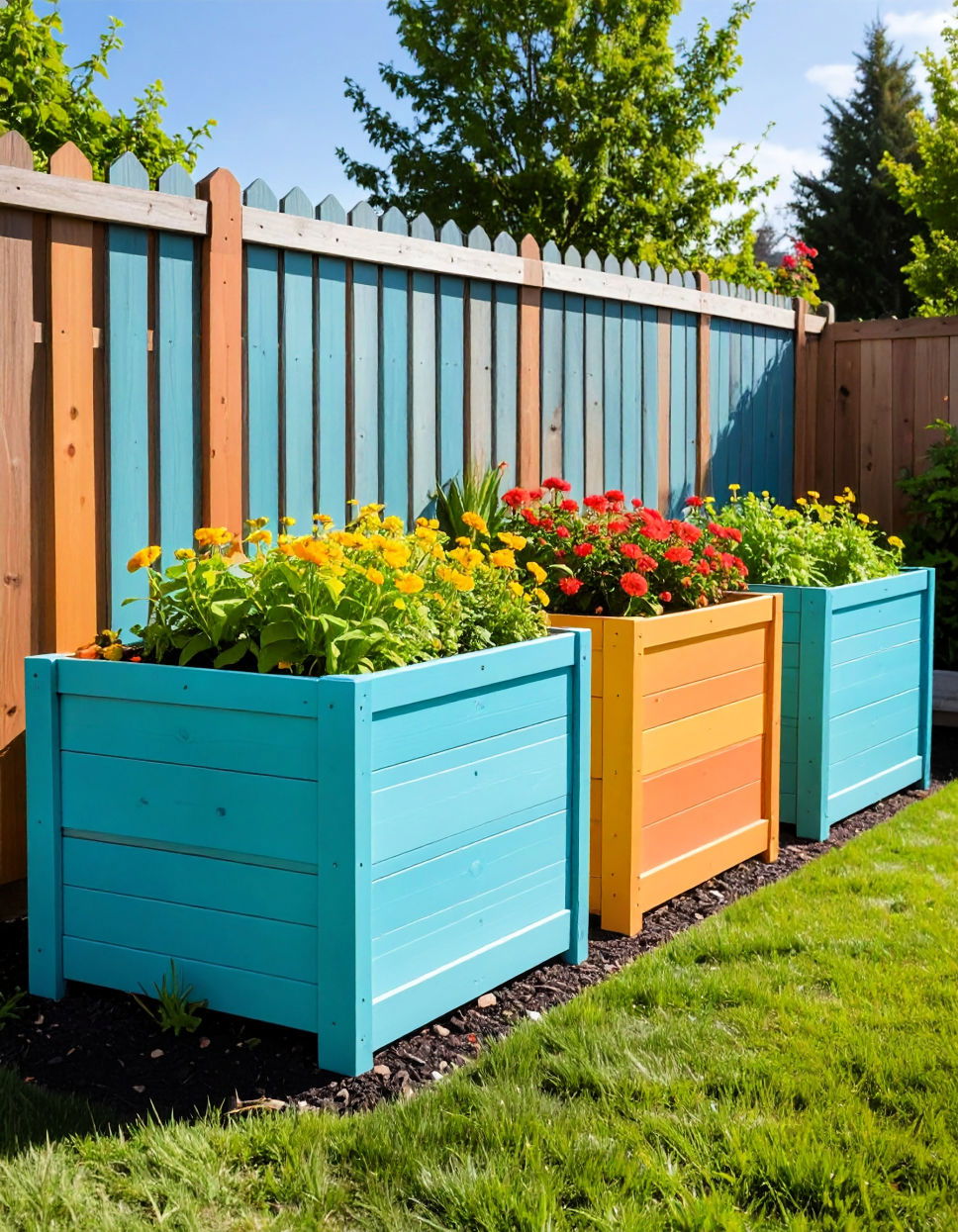
A coat of paint can completely transform a simple raised bed into a cheerful garden feature. Use weatherproof outdoor paint to match or contrast with your fence color. Bright shades like turquoise, yellow, or coral bring energy and personality to the garden, especially in neutral or wood-heavy landscapes. Choose non-toxic, plant-safe options if painting the interior. These colorful beds become instant focal points and help define the gardening area with charm.
6. Built-In Bench with Planter for Dual Functionality
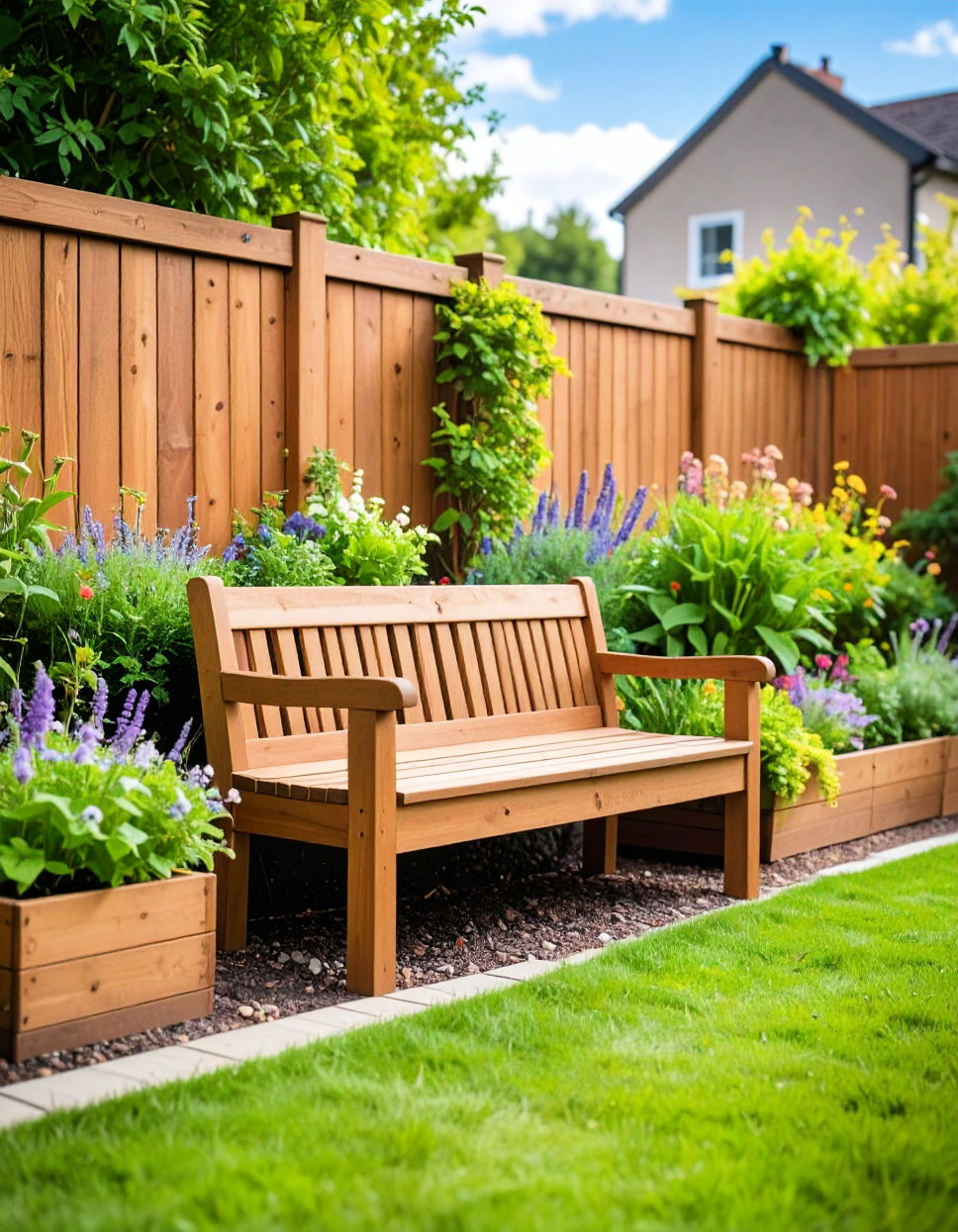
Combining a raised garden bed with a bench built into the edge creates a functional and inviting setup. This idea turns the fence line into a space for both growing and relaxing. The bench can double as a spot to set tools or enjoy your garden views. Construct it from sturdy weather-resistant wood, and make sure the planter box portion is deep enough for healthy root development. It’s a great solution for smaller yards where multifunctionality is key.
7. Stone-Rimmed Beds for Rustic Elegance
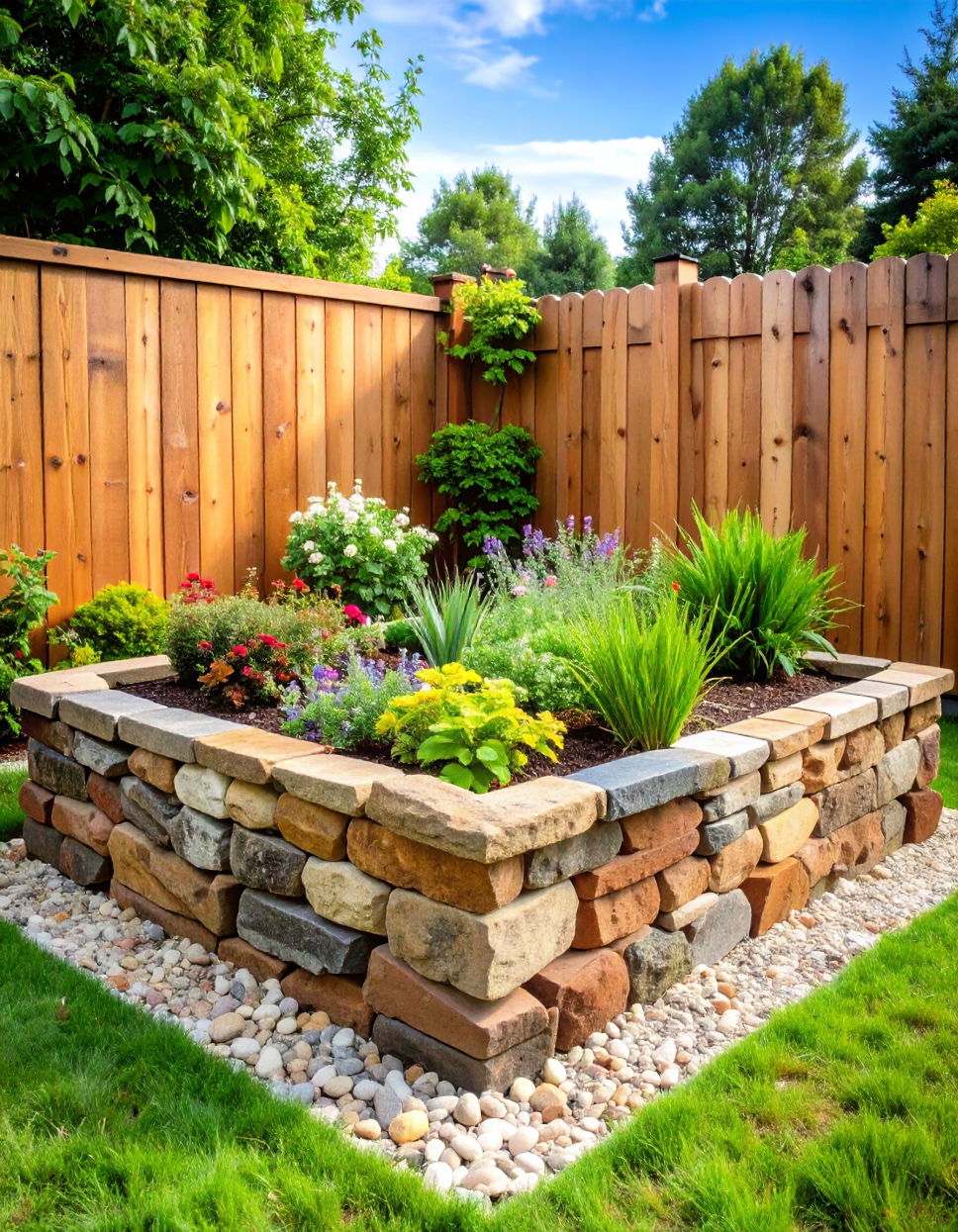
For a natural and earthy aesthetic, stone-edged raised beds provide timeless charm. Set against a wooden or metal fence, the rugged stone texture offers pleasing contrast. You can use flat stones, bricks, or even repurposed concrete blocks for the border. These materials retain heat well, which benefits many plants, and they’re highly durable. With the fence acting as a backdrop, the stone border defines the bed and elevates your garden design effortlessly.
8. Galvanized Metal Beds for a Modern Industrial Look
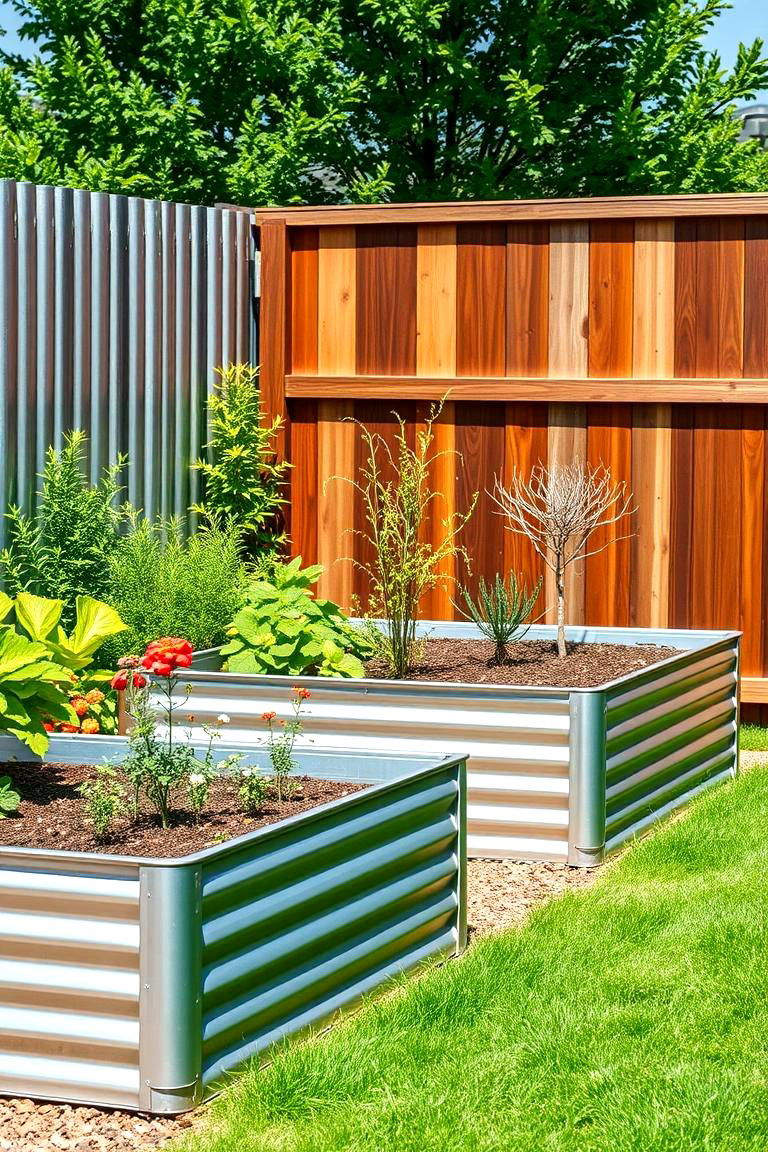
Galvanized metal raised beds bring a sleek, modern feel that contrasts beautifully with wood fences. They're especially durable, resistant to pests, and can withstand harsh weather. The metallic finish reflects sunlight and can slightly warm the soil—ideal for early planting. Choose corrugated steel or trough-style planters for a clean-lined, low-maintenance option. Paired with structured plants like boxwoods or ornamental grasses, these beds make your garden look polished and purposeful.
9. Cedar Beds with Built-In Irrigation for Easy Maintenance
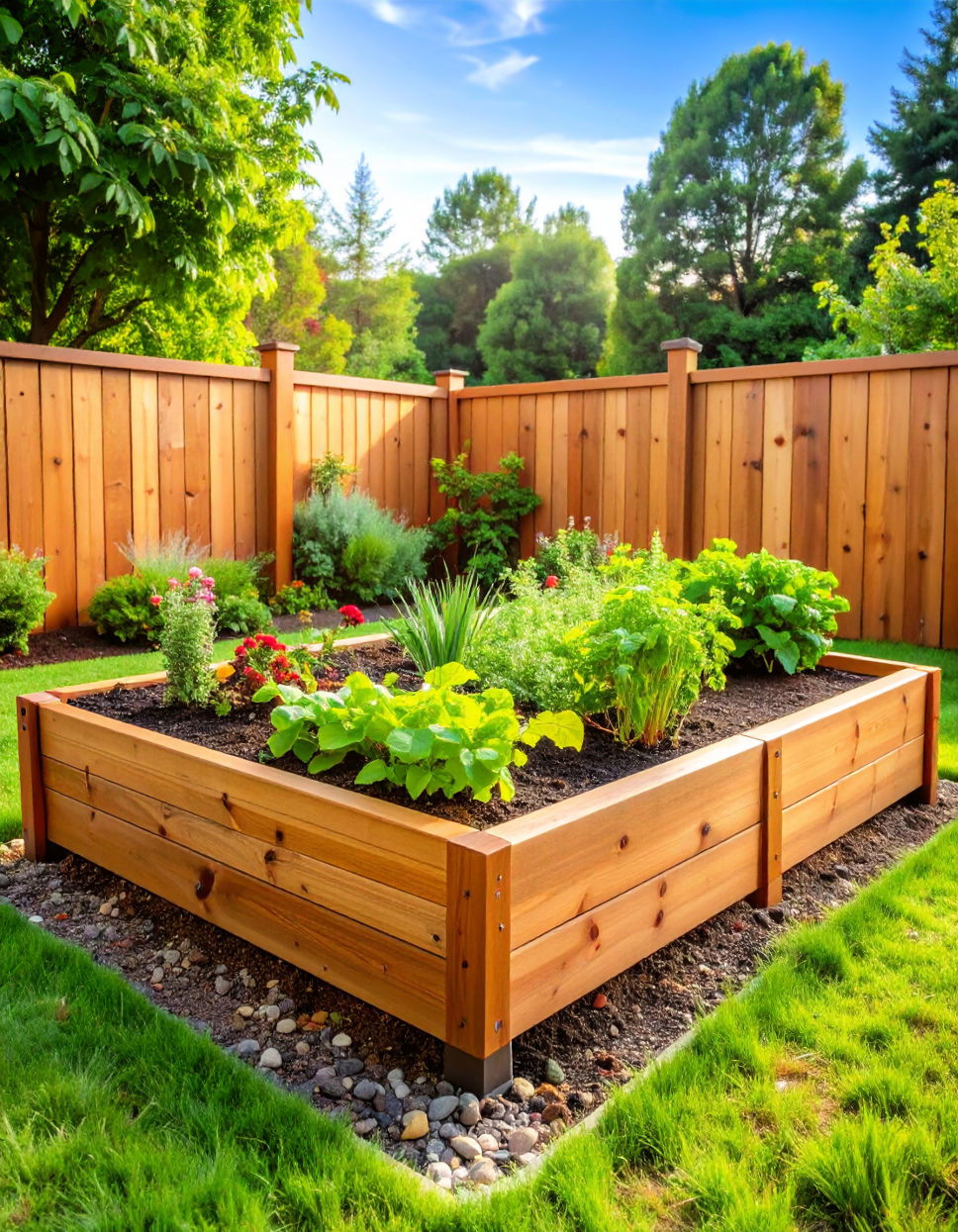
A raised bed made from cedar is not only attractive and rot-resistant—it also pairs well with an integrated drip irrigation system. This combo keeps plants healthy and reduces watering chores. Place the beds flush against your fence and run irrigation tubing behind or under the soil. It’s especially useful for busy gardeners or those in hot climates. The cedar’s warm tones and pleasant scent also enhance the overall garden experience.
10. U-Shaped Raised Beds for Walk-In Access
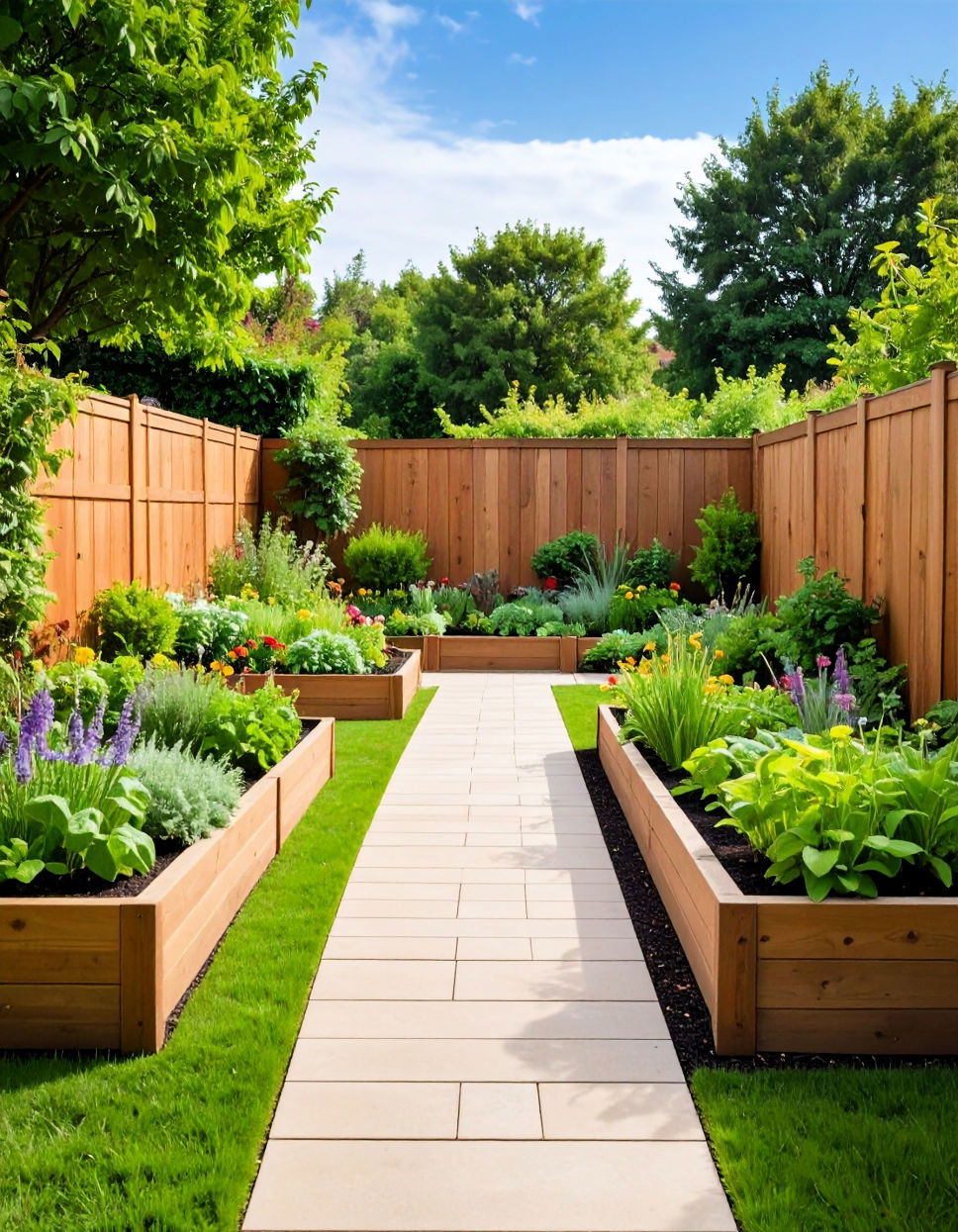
A U-shaped layout along the fence offers maximum planting space while maintaining easy access to every corner. This configuration works well in larger yards or along wide fences and is ideal for gardeners with mobility concerns. Raised edges define the garden’s shape and prevent soil erosion, while the open center walkway keeps everything reachable. Fill it with herbs, vegetables, or flowers and enjoy the immersive garden feel it creates.
11. Cinder Block Beds for Budget-Friendly Gardening
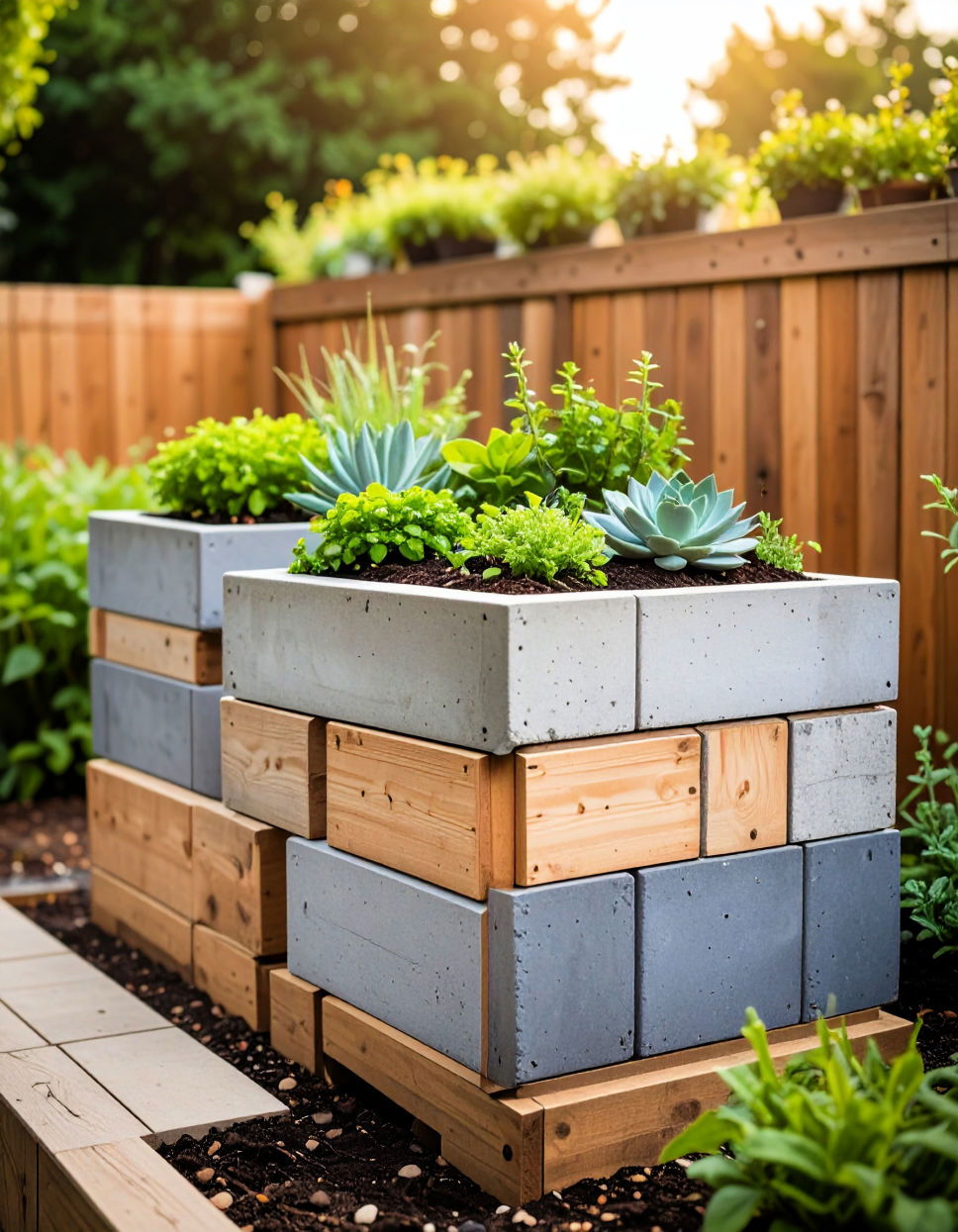
Cinder blocks are a cost-effective and highly customizable material for raised beds. They stack easily, require no tools, and can be arranged in straight lines or curves along the fence. Each block hole can also be used as a mini planter for herbs or succulents. Their industrial look pairs well with modern fences, and their weight means they stay put. This is a great beginner-friendly option that offers flexibility and strong structure.
12. Raised Beds with Vertical Planters Above
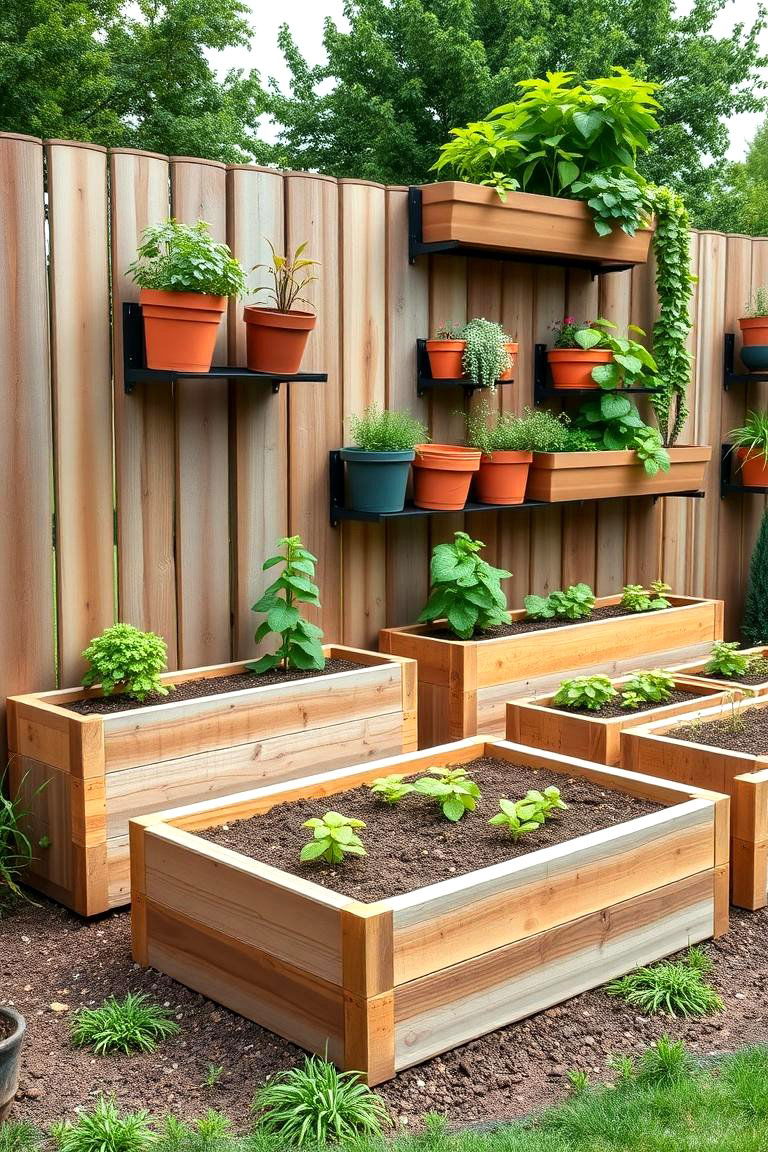
For maximum productivity, pair a ground-level raised bed with vertical planters mounted on the fence. This layering technique makes use of both ground and vertical space—ideal for small yards or patios. Use stacked pots, wall-mounted troughs, or pocket planters to grow herbs, lettuce, or flowers above the soil bed. This tiered effect adds texture and depth to your garden while keeping everything within arm’s reach.
13. Reclaimed Wood Beds for Eco-Friendly Style
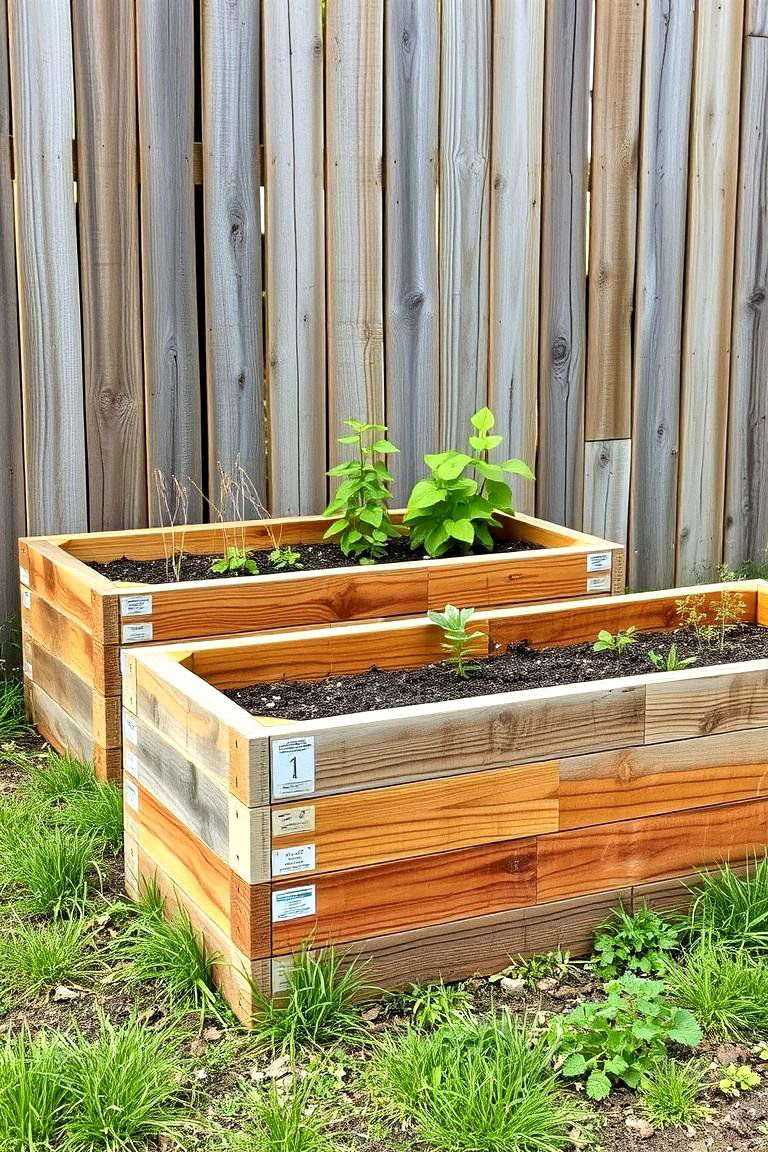
Using salvaged wood for your raised bed frames is both sustainable and stylish. Whether from old pallets, fencing, or barn boards, reclaimed wood adds rustic charm and reduces waste. These beds blend beautifully into natural surroundings and pair well with both aged and new fences. Just be sure to sand any rough edges and avoid chemically treated wood if growing edibles. Seal the wood for added longevity while keeping the organic look intact.
14. Kids’ Garden Beds with Colorful Borders
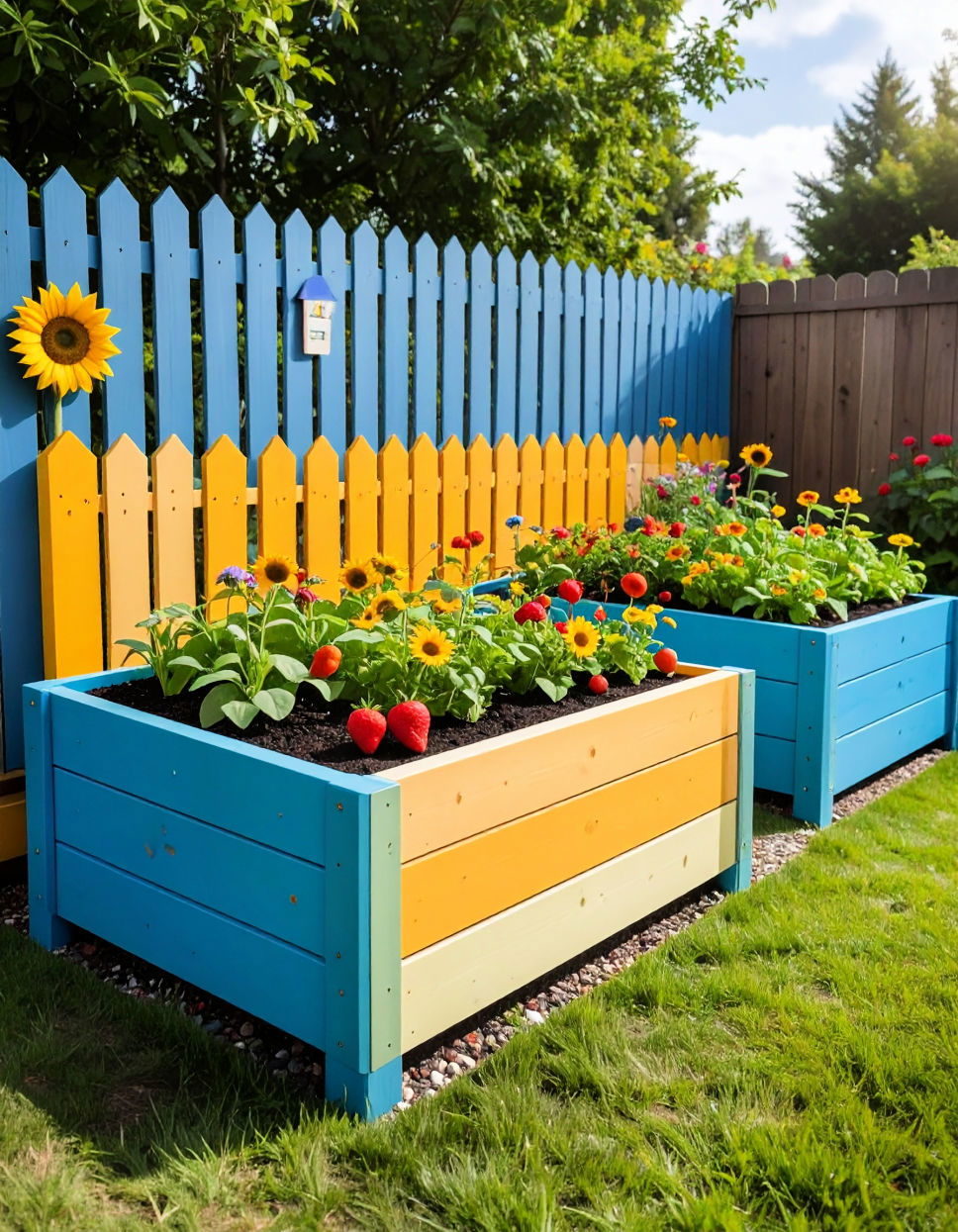
Encouraging children to garden is easier with designated raised beds built at their height and lined with fun, colorful borders. Paint the wood in bright colors, use stencils for fun shapes, or add kid-friendly plant markers. Place these beds near the fence for protection and support, and fill them with easy-to-grow crops like radishes, strawberries, or sunflowers. It’s an engaging way to teach responsibility and spark curiosity about nature.
15. Pollinator-Friendly Beds with Fence Trellises
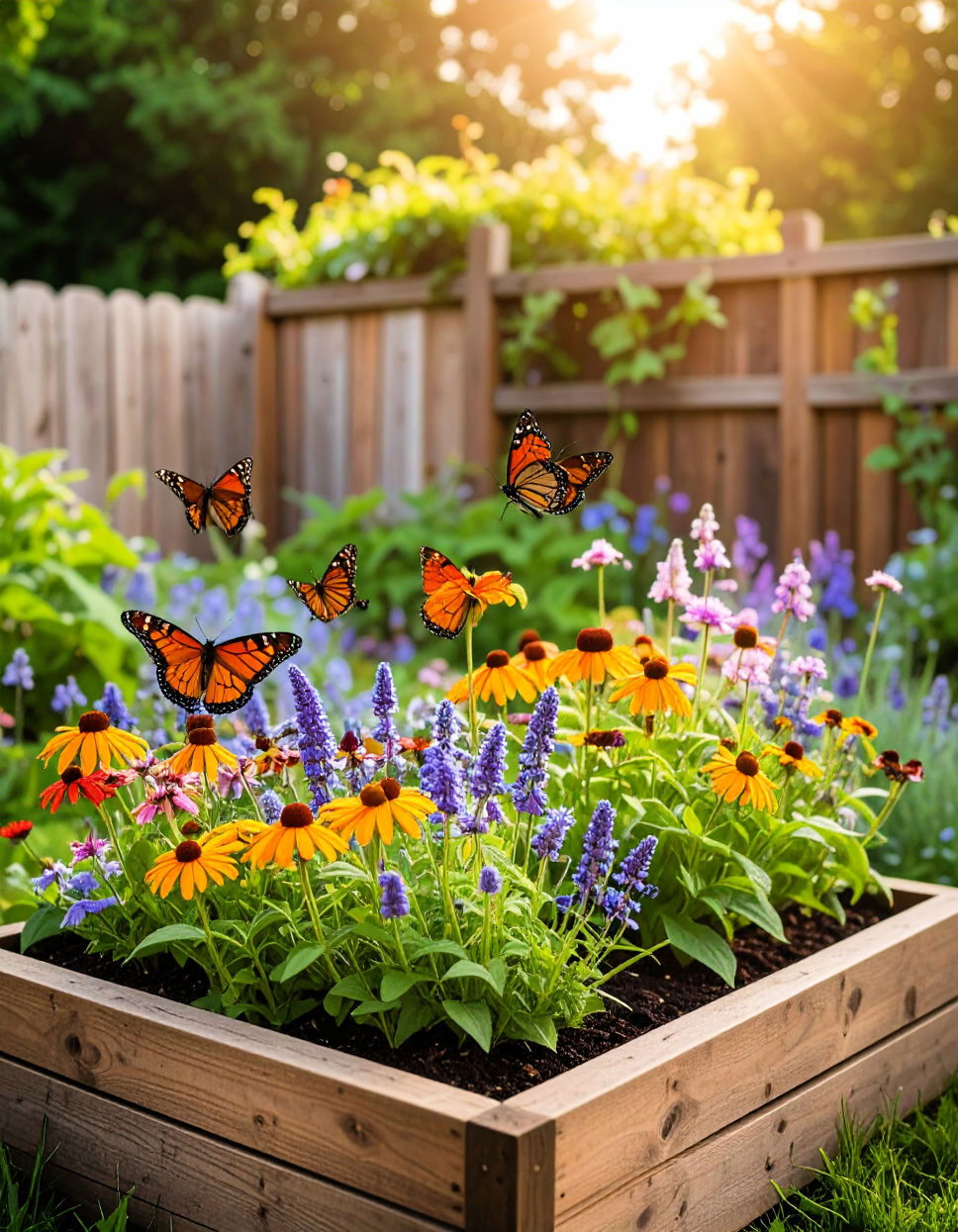
A raised bed filled with pollinator-attracting plants—like lavender, bee balm, or echinacea—can turn your fence line into a buzzing habitat. Add trellises to support flowering vines like clematis or morning glory, creating vertical food sources for butterflies and bees. Position beds in sunny spots to attract maximum pollinator activity. This not only benefits your garden ecosystem but brings vibrant life and color to the space.
16. Shade-Tolerant Beds Under Trees or Structures
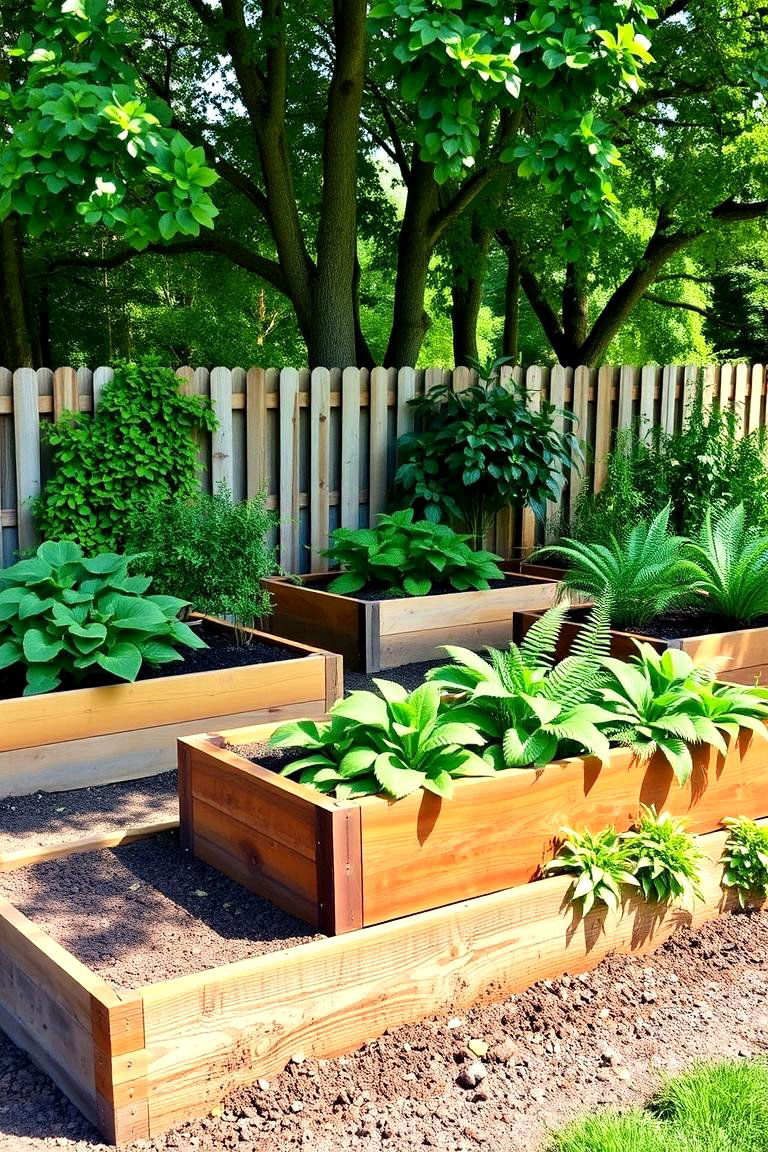
If your fence line is shaded by trees or buildings, you can still build a productive raised bed with shade-loving plants. Leafy greens, hostas, ferns, and root veggies like beets thrive in low light. Use rich, well-draining soil to compensate for the reduced sun exposure. These beds help you reclaim underused spaces and bring greenery to darker corners of your yard.
17. Built-In Compost Compartments for Sustainable Gardening
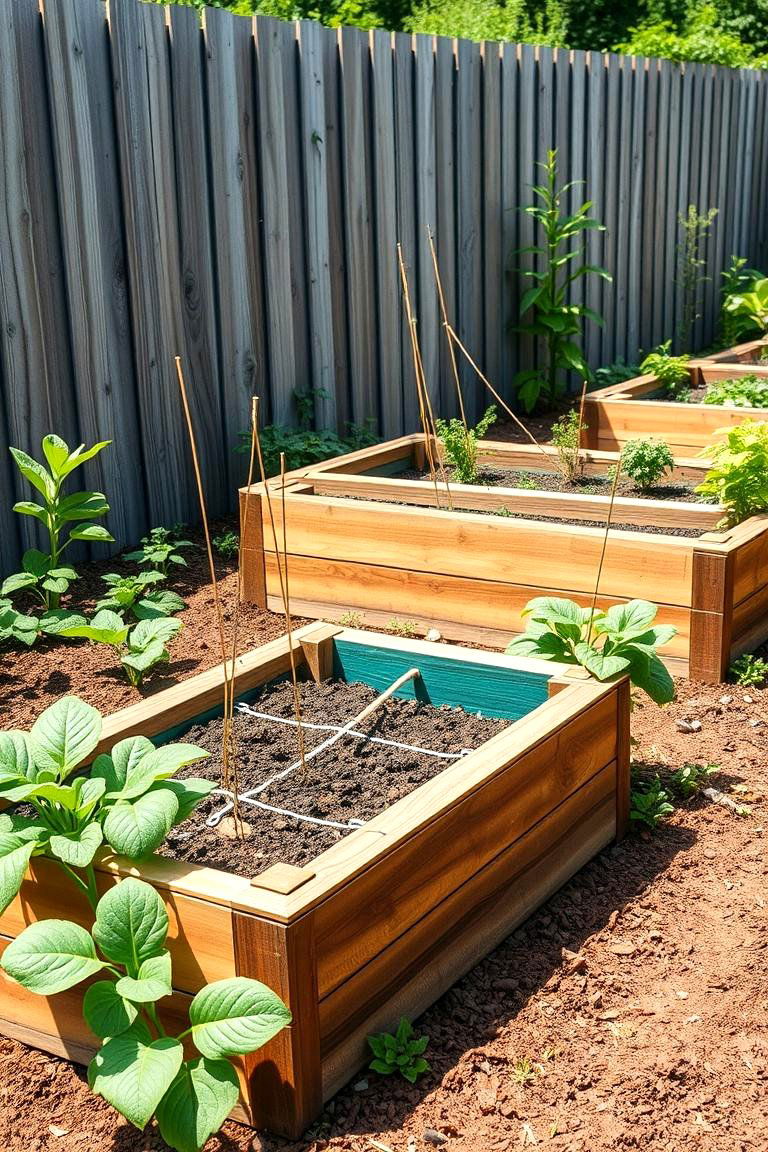
Some raised beds include a compost section built into the frame—perfect for breaking down garden waste right where you need it. Place the compost compartment at one end of the bed, against the fence, and use it to recycle plant trimmings or kitchen scraps. The resulting compost can then be mixed into the bed soil for a continuous cycle of nourishment. It’s a smart way to reduce waste and feed your garden naturally.
18. Decorative Borders with Mosaic or Tile Inlays
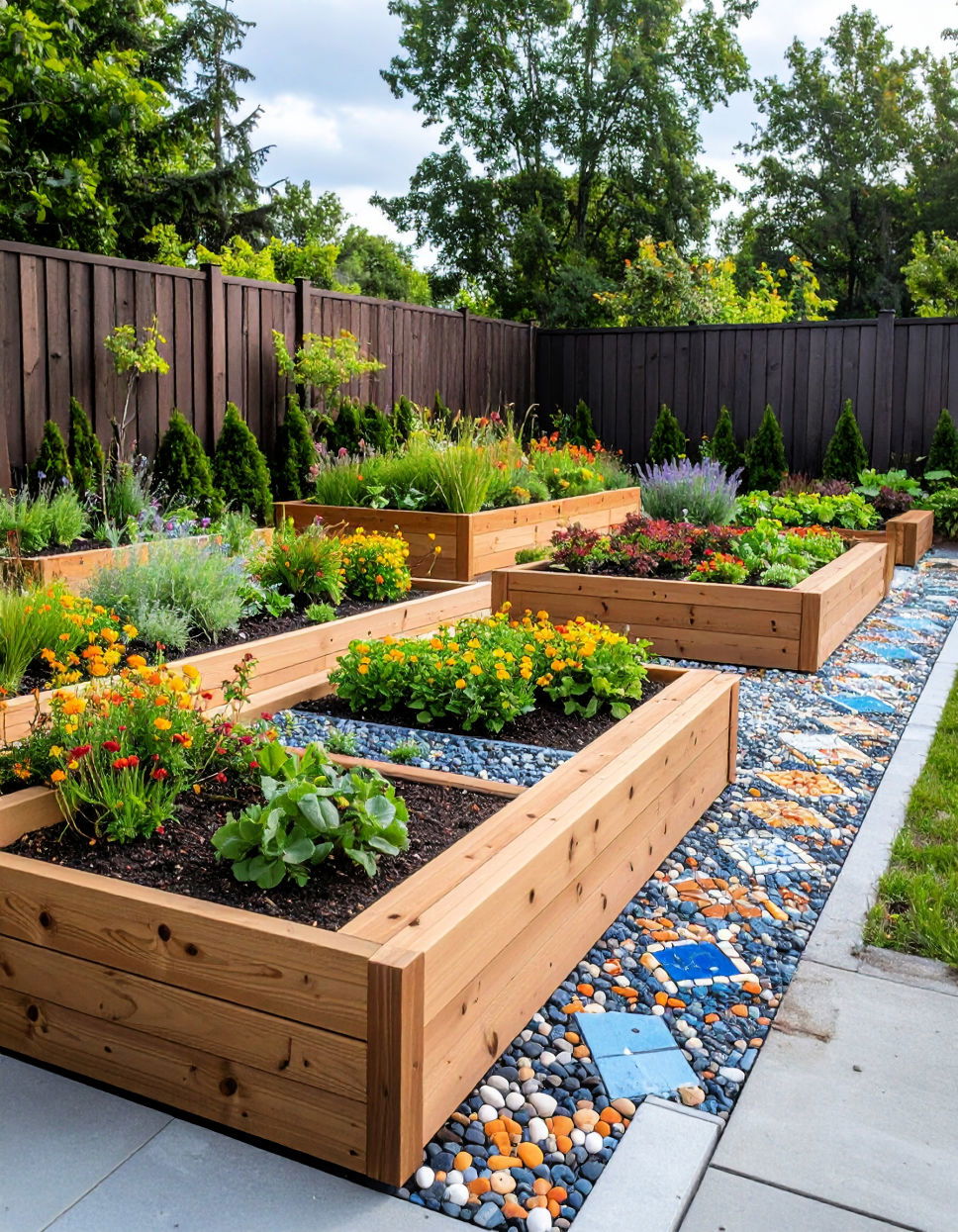
Add artistic flair to your raised beds by incorporating decorative tiles or mosaics along the borders. Whether embedded in concrete blocks or adhered to wooden frames, these designs elevate your fence garden with personal expression. Use colors that complement your plants or surroundings. This detail transforms your garden into a work of art and adds lasting value to your outdoor space.
19. Native Plant Beds for Low-Maintenance Beauty
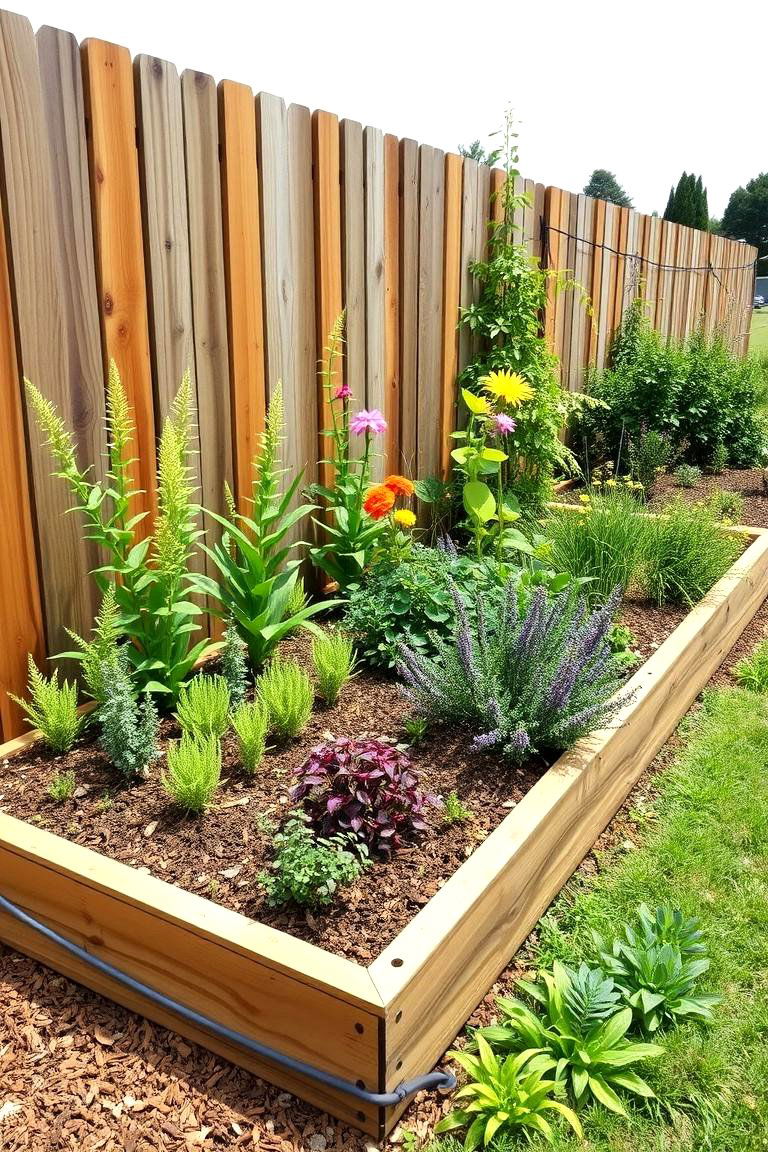
Focusing your raised beds on native plants is a smart way to ensure success and reduce upkeep. These species are adapted to your local climate and require less watering, fertilizing, or pest control. Planting them against your fence allows for a tidy, managed appearance while still supporting biodiversity. Add a mulch layer to retain moisture and suppress weeds, making these beds easy to manage and ecologically friendly.
20. Aromatic Herb Beds for Sensory Appeal
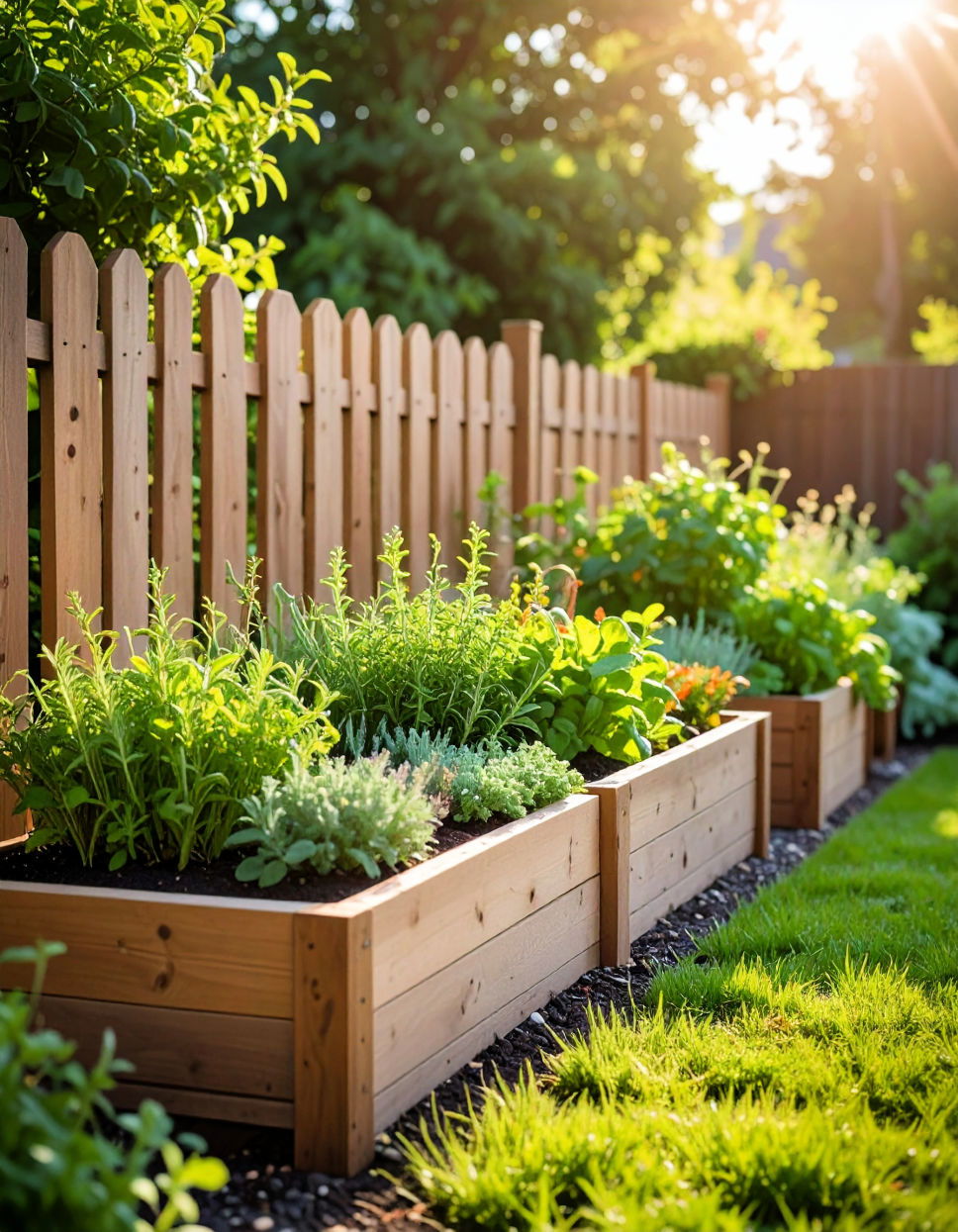
Imagine brushing past a raised bed filled with rosemary, thyme, and mint each time you walk along your fence. Herb-focused beds offer wonderful fragrance and flavor, as well as pest-repelling properties. Place them in sunny spots and harvest frequently to keep them healthy and full. Raised beds make it easier to control soil quality, which herbs appreciate. Their compact growth also means they won’t crowd out neighboring plants.
21. Seasonal Display Beds for Year-Round Interest

Change the look of your fence garden with seasonal plantings in a raised bed. Grow spring bulbs, summer annuals, fall mums, and winter greenery to keep the space vibrant throughout the year. Rotate soil additives and compost with each season to keep your bed healthy. This approach keeps your outdoor space feeling fresh and alive and offers a fun, creative outlet for expressing seasonal style.
22. Wildlife-Friendly Beds for Urban Habitats
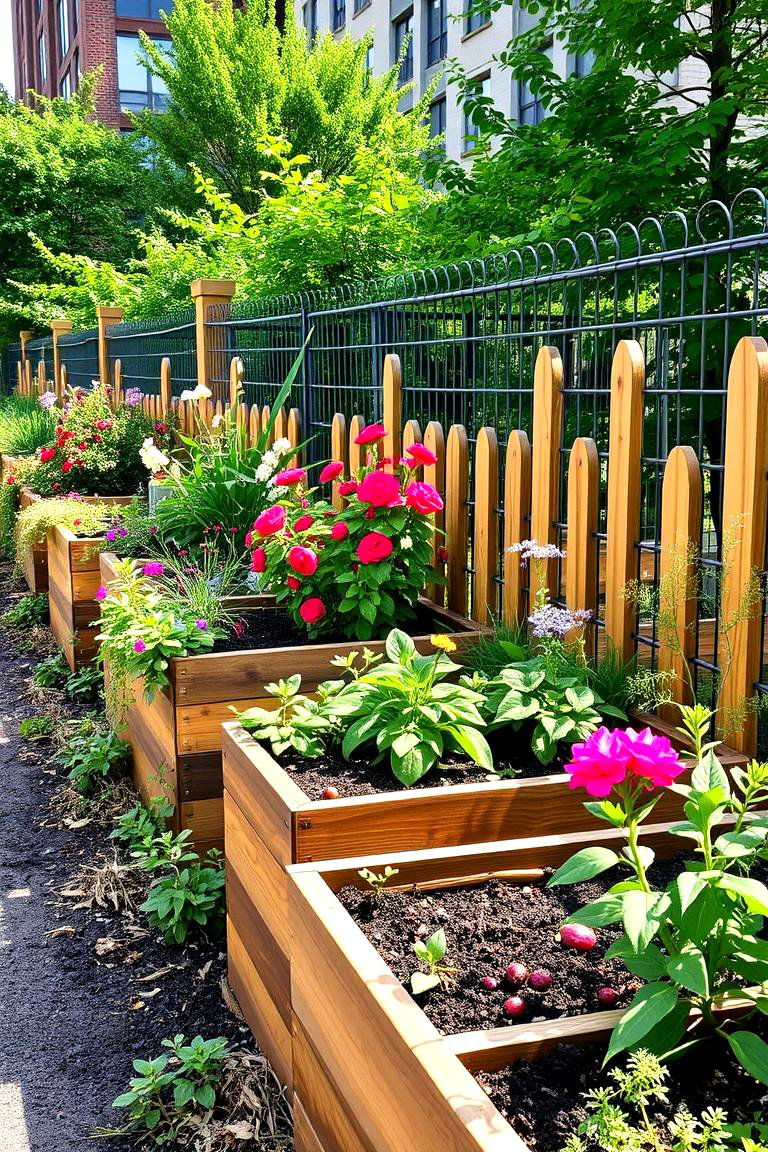
In urban settings, raised beds can be designed to support local wildlife. Include native flowering plants, berry bushes, or even a water dish nearby. Fence-line beds create safe zones for insects, birds, and small animals, especially when placed in quieter parts of your yard. Use natural materials like logs or stones to provide shelter and texture. Supporting urban biodiversity is both rewarding and environmentally impactful.
23. Raised Beds with Gravel Paths for Clean Access
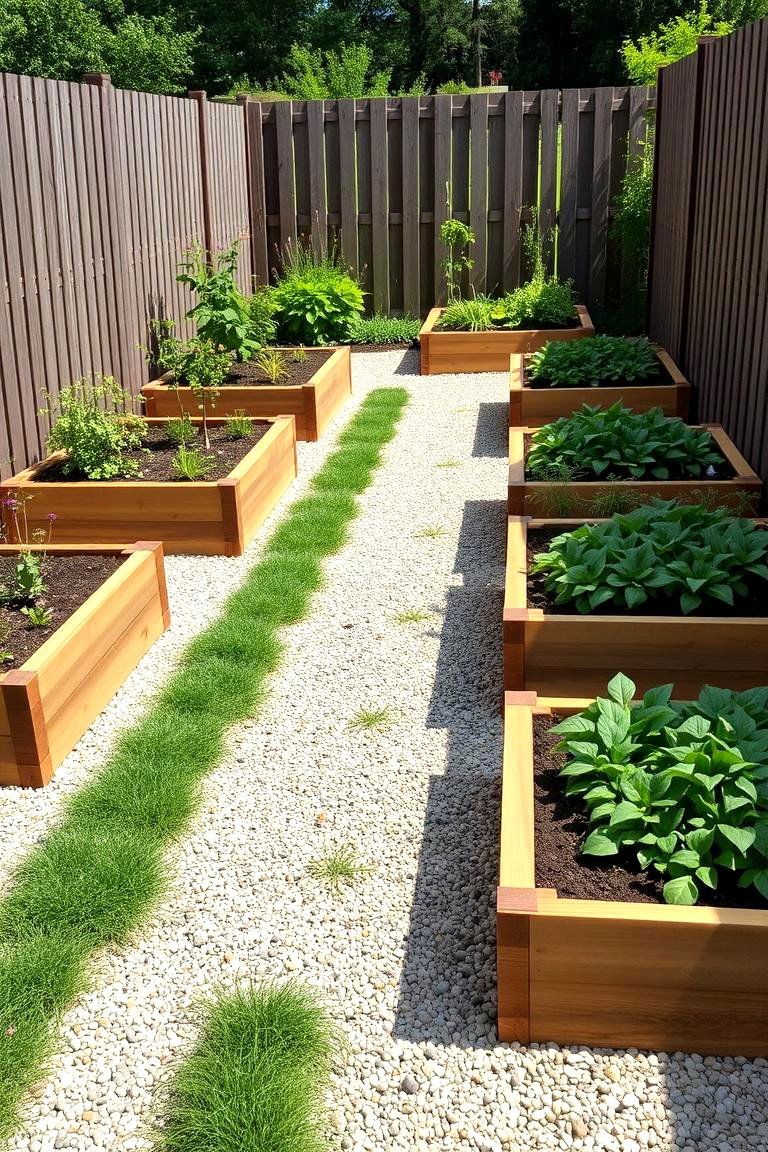
Laying gravel paths around or in front of your raised beds helps with drainage and keeps the area tidy. It also defines the gardening zone and prevents muddy walkways during rainy seasons. Choose pea gravel or decomposed granite for comfort and visual appeal. This pairing of raised beds and structured paths gives your fence line a polished, well-maintained look while making gardening easier.
24. Mix-and-Match Bed Heights for Visual Interest
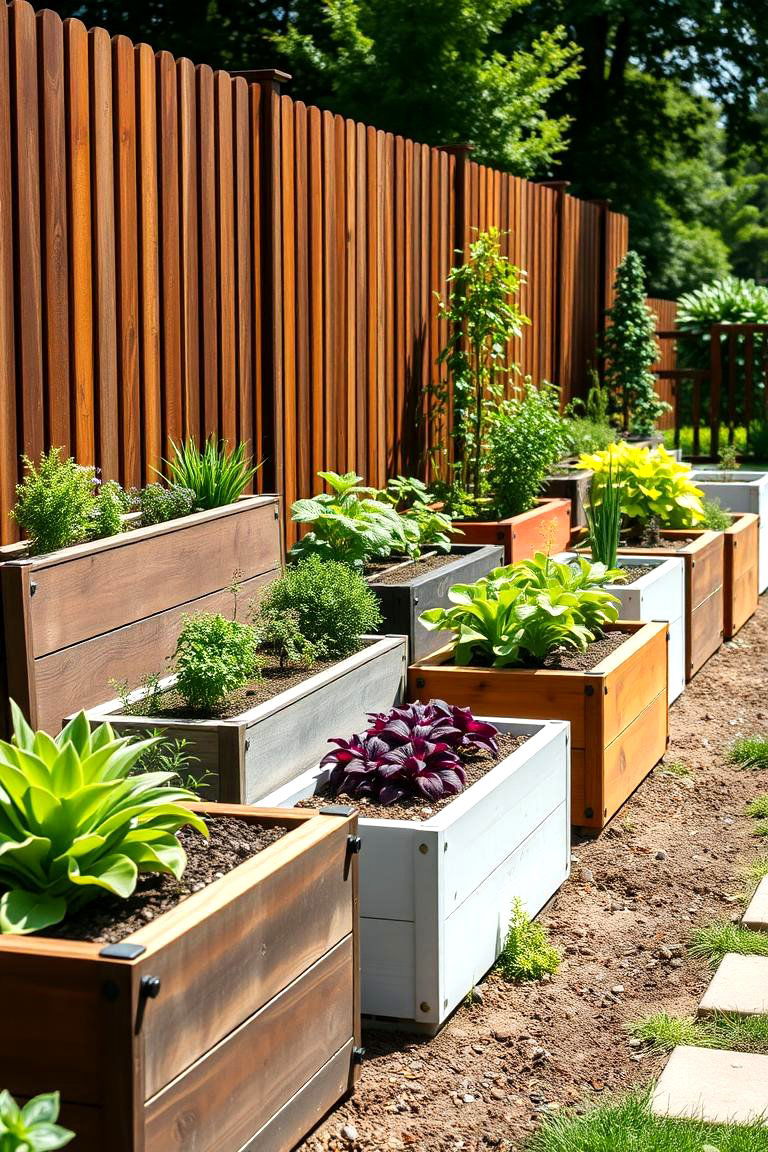
Using raised beds of different heights along a fence adds dynamic structure to your garden design. Mix low planters for herbs with taller boxes for root vegetables or flowers. The variety creates movement and layers that break up monotony along long fences. It’s also practical—higher beds are easier to tend for those with back or knee issues, while lower ones blend in neatly with grass or ground cover.
25. DIY Rail Planter Beds for Tight Vertical Spaces
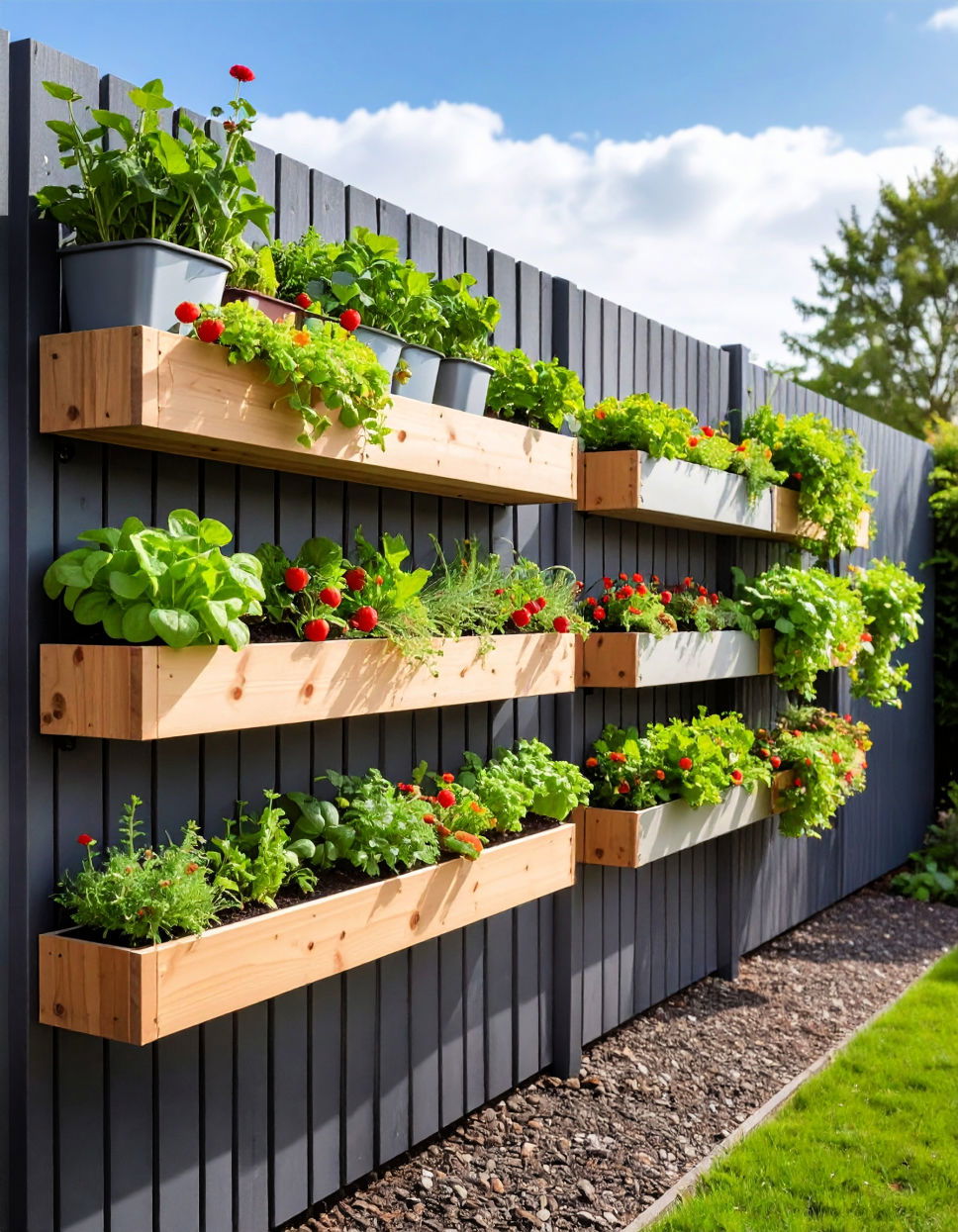
Attach narrow trough-style planters or DIY rail boxes directly onto your fence for space-saving raised beds. These are great for herbs, strawberries, or lettuce and work well in tiny yards, patios, or balconies. Use treated wood or metal containers with drainage holes, and mount them securely at reachable heights. This setup brings the garden to eye level and makes excellent use of underused vertical space.
Conclusion:
Maximizing your garden space with raised beds along a fence is a smart, stylish, and sustainable choice. Whether you prefer rustic charm, modern simplicity, or kid-friendly fun, there’s a design that fits your needs and aesthetics. These ideas show how even the narrowest strip of land can become a vibrant growing zone—adding beauty, productivity, and purpose to your fence line. By exploring these 25 raised garden bed along fence ideas, you’ll uncover practical ways to turn boundaries into bountiful spaces, one creative bed at a time.


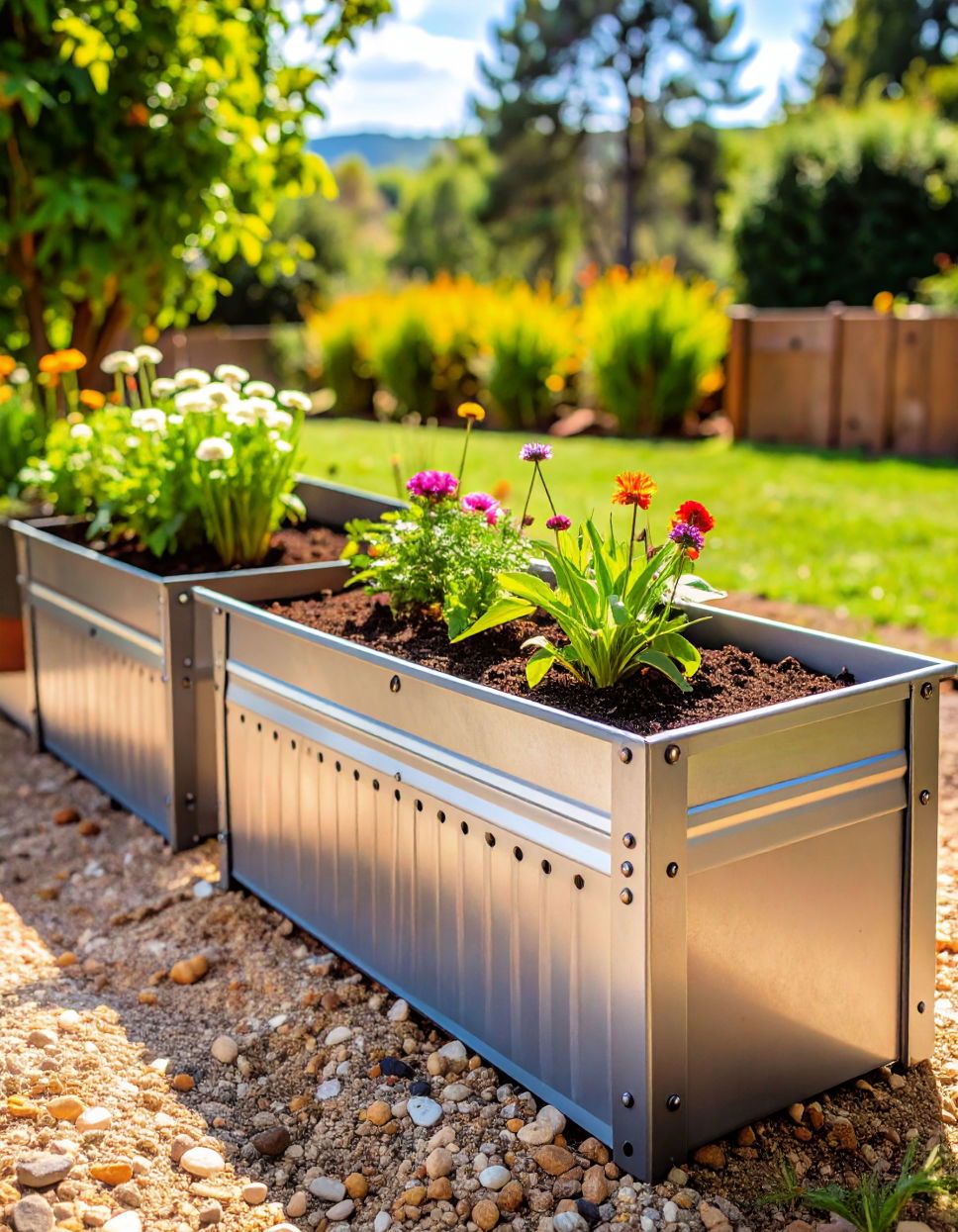
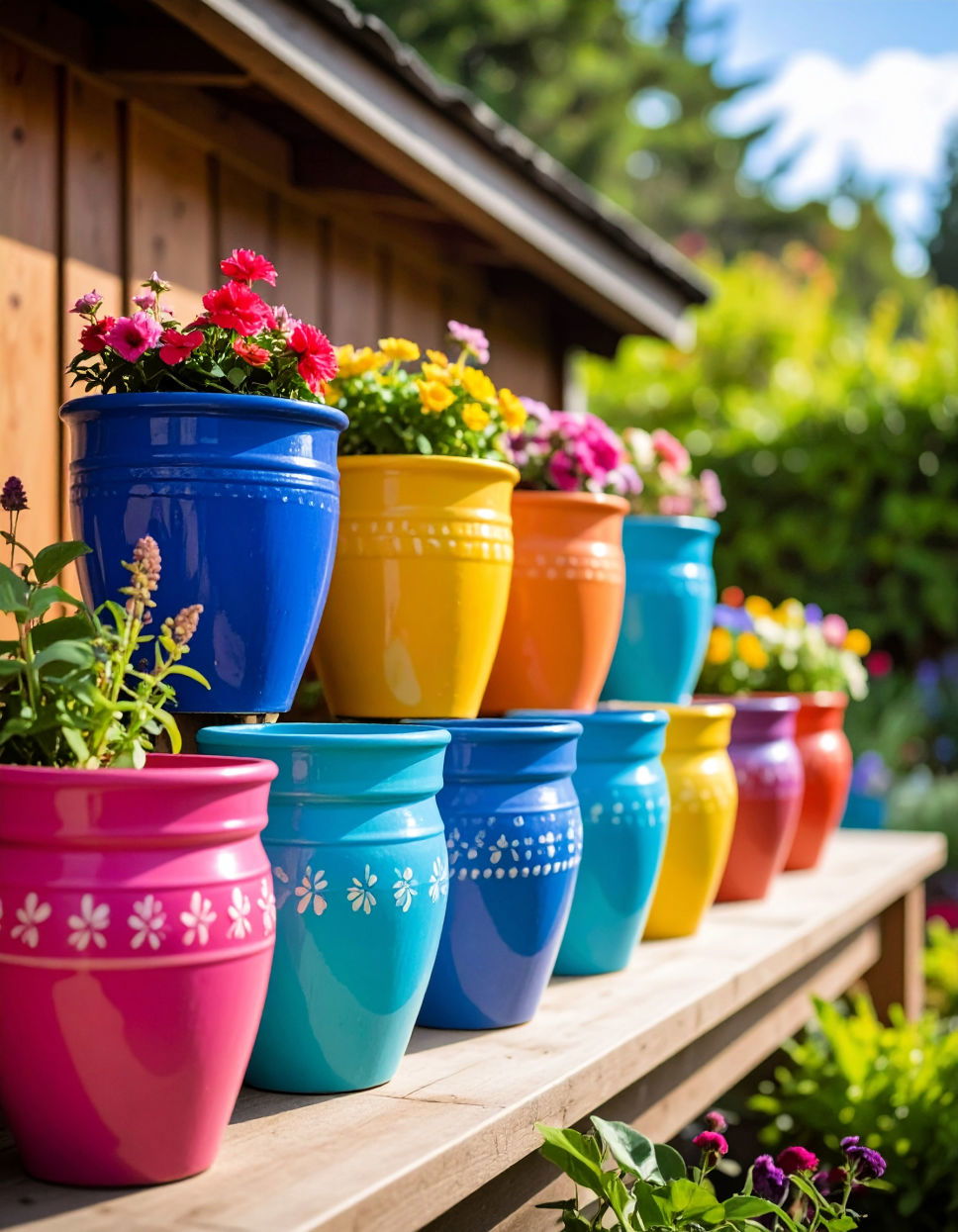
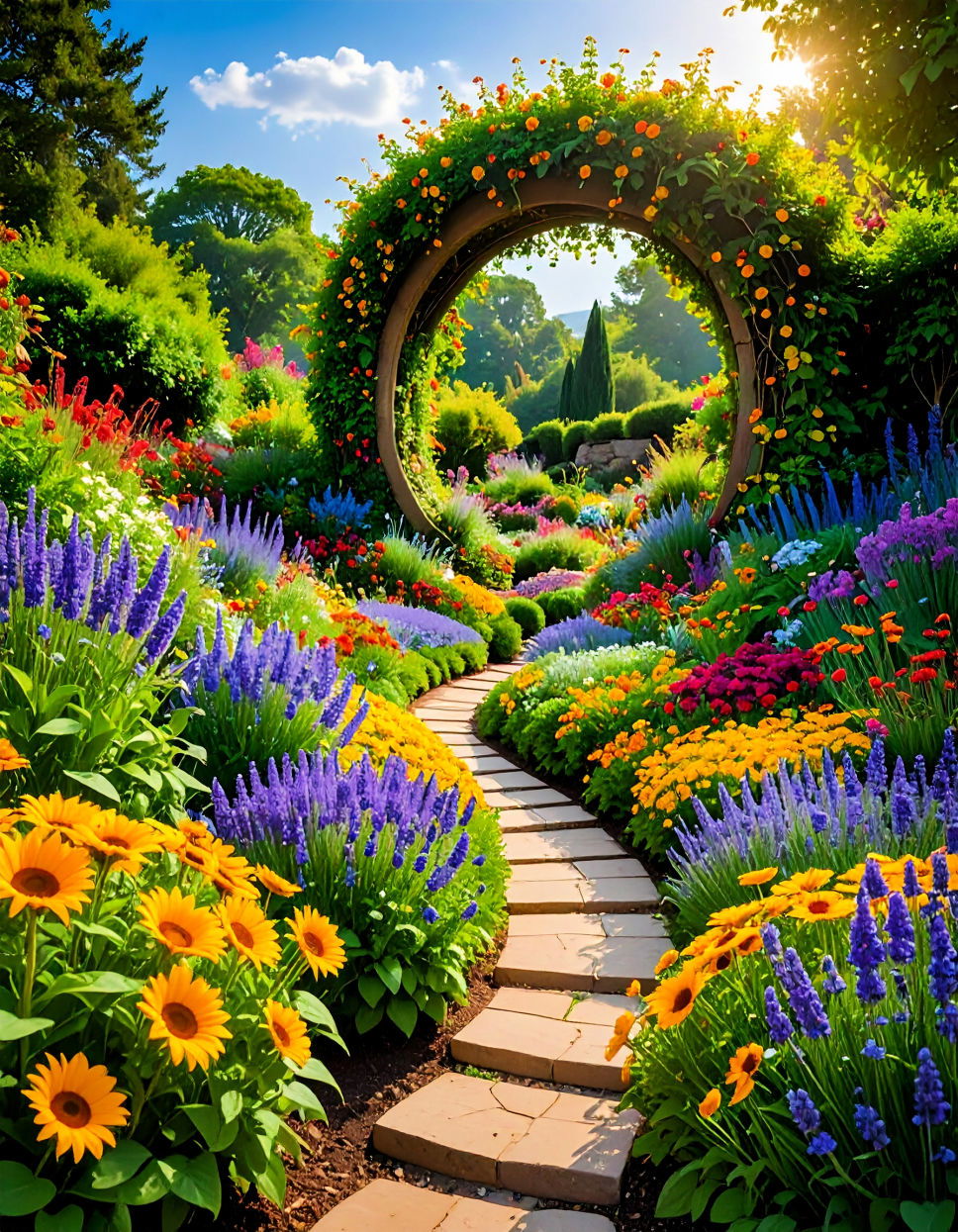
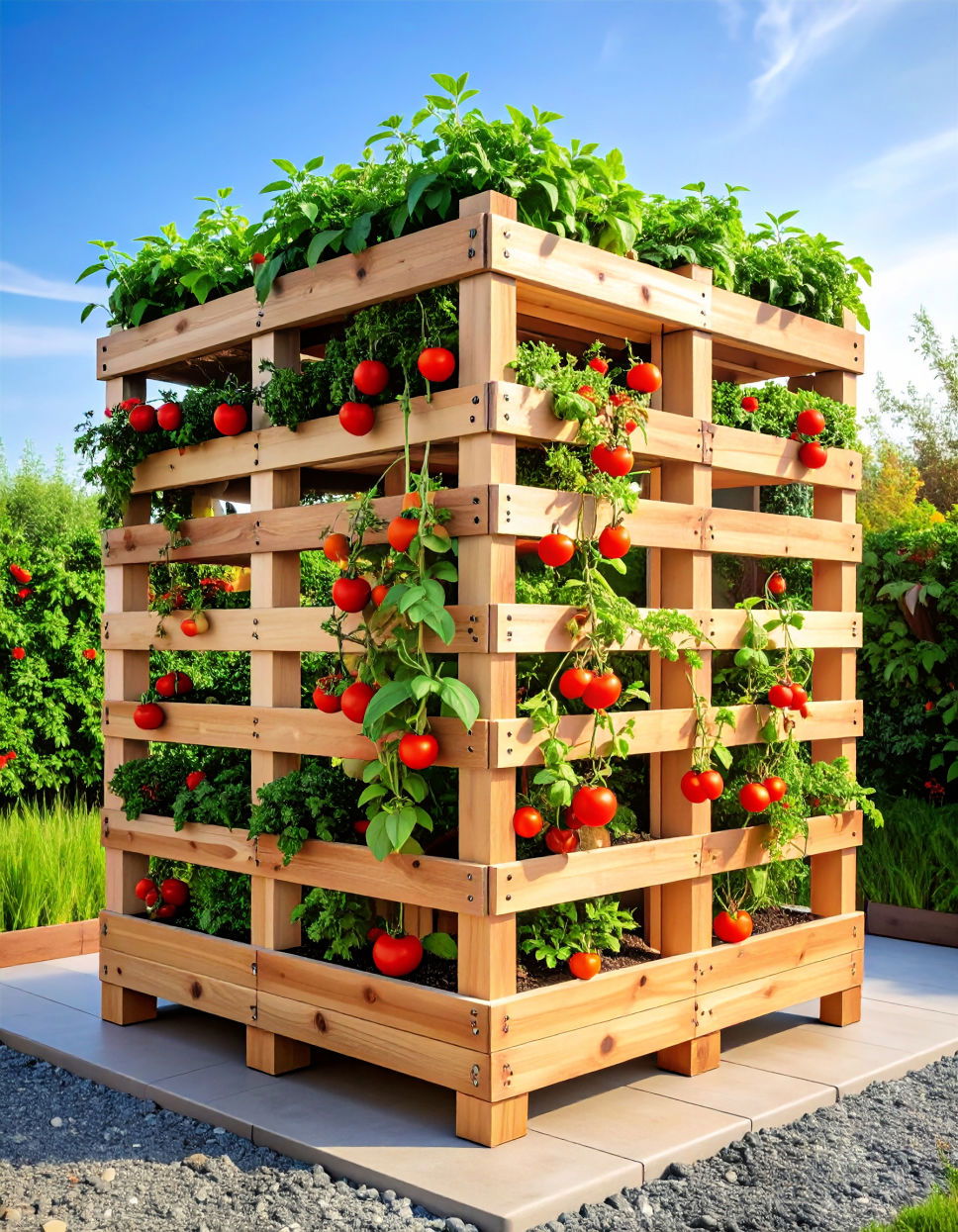
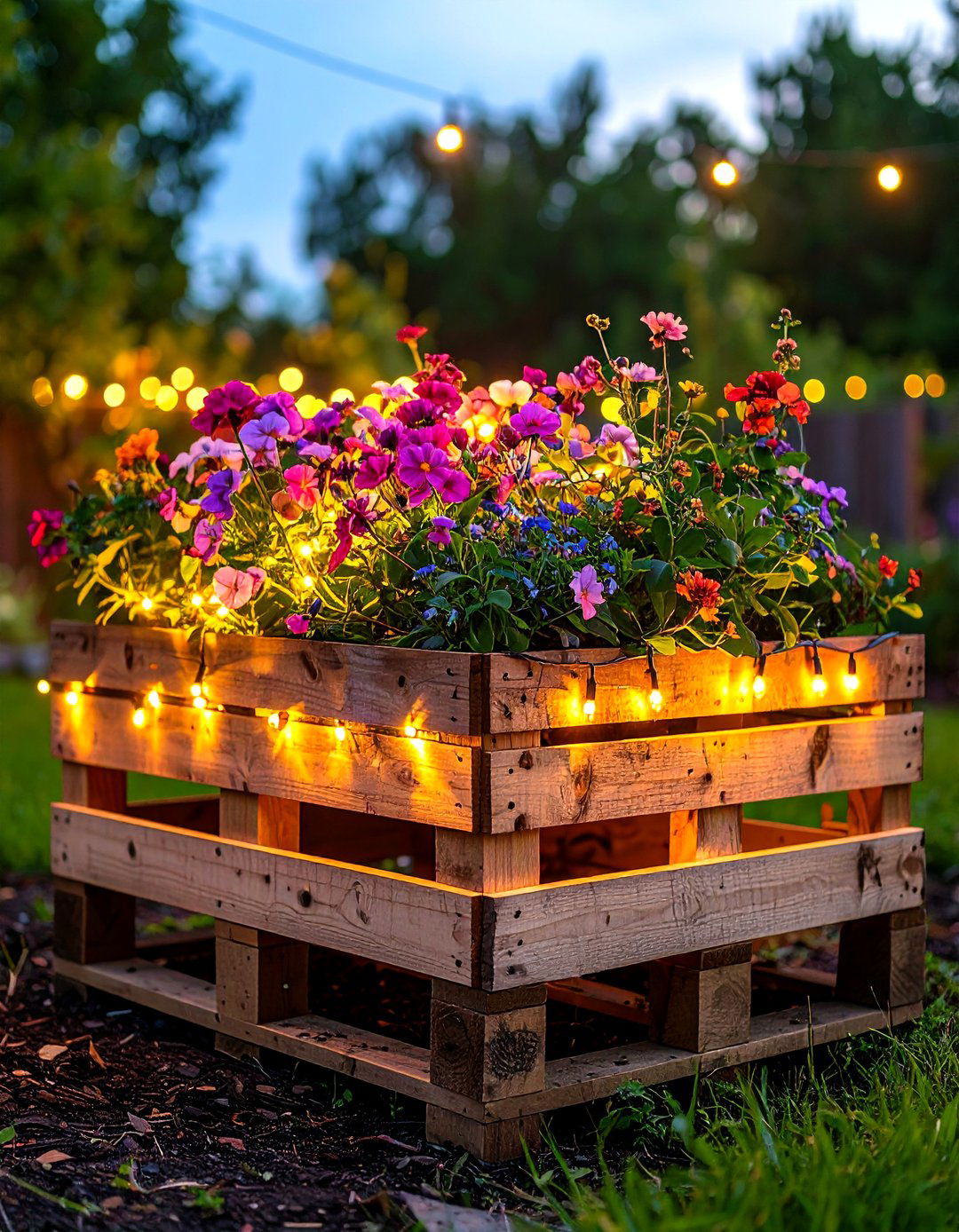
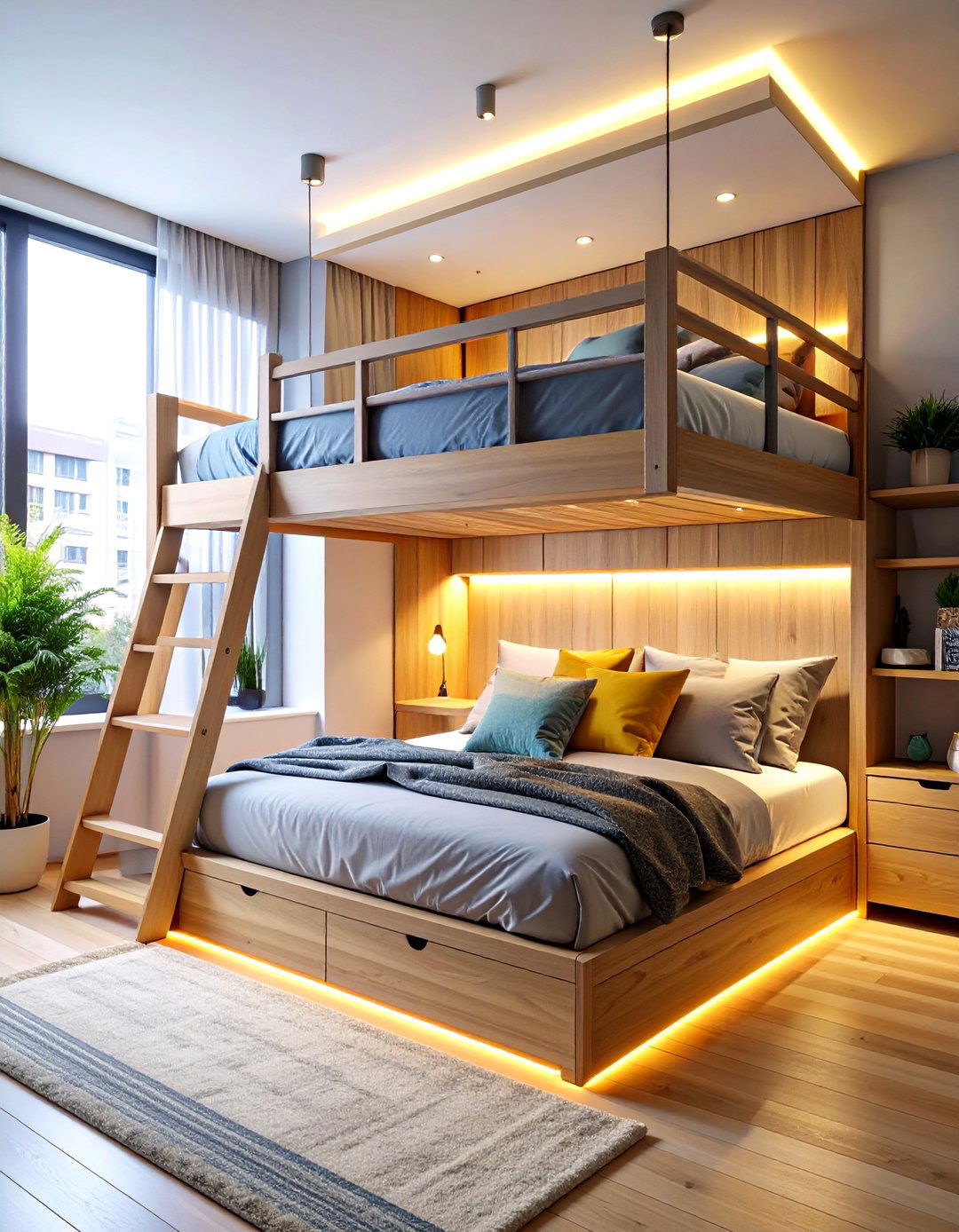
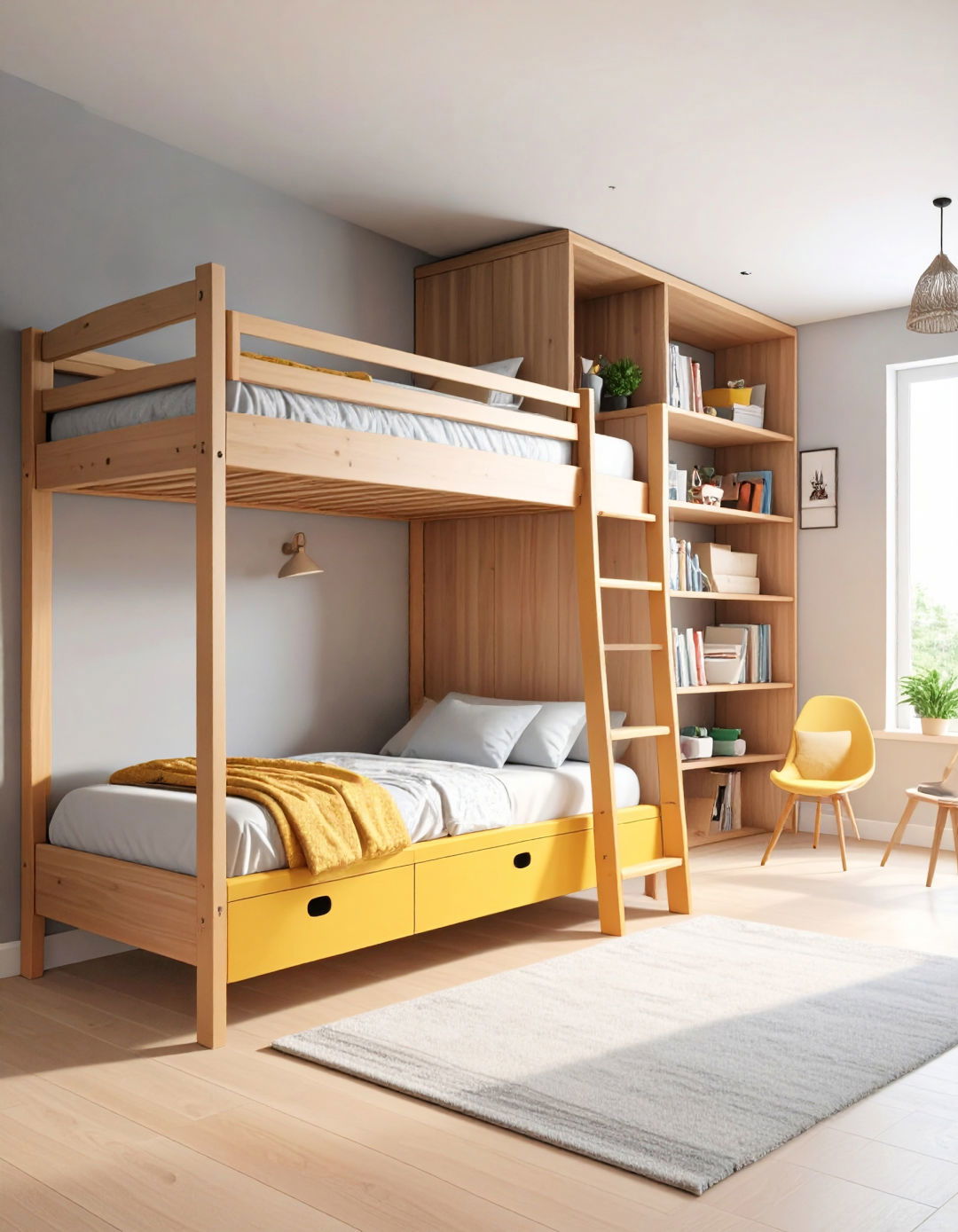
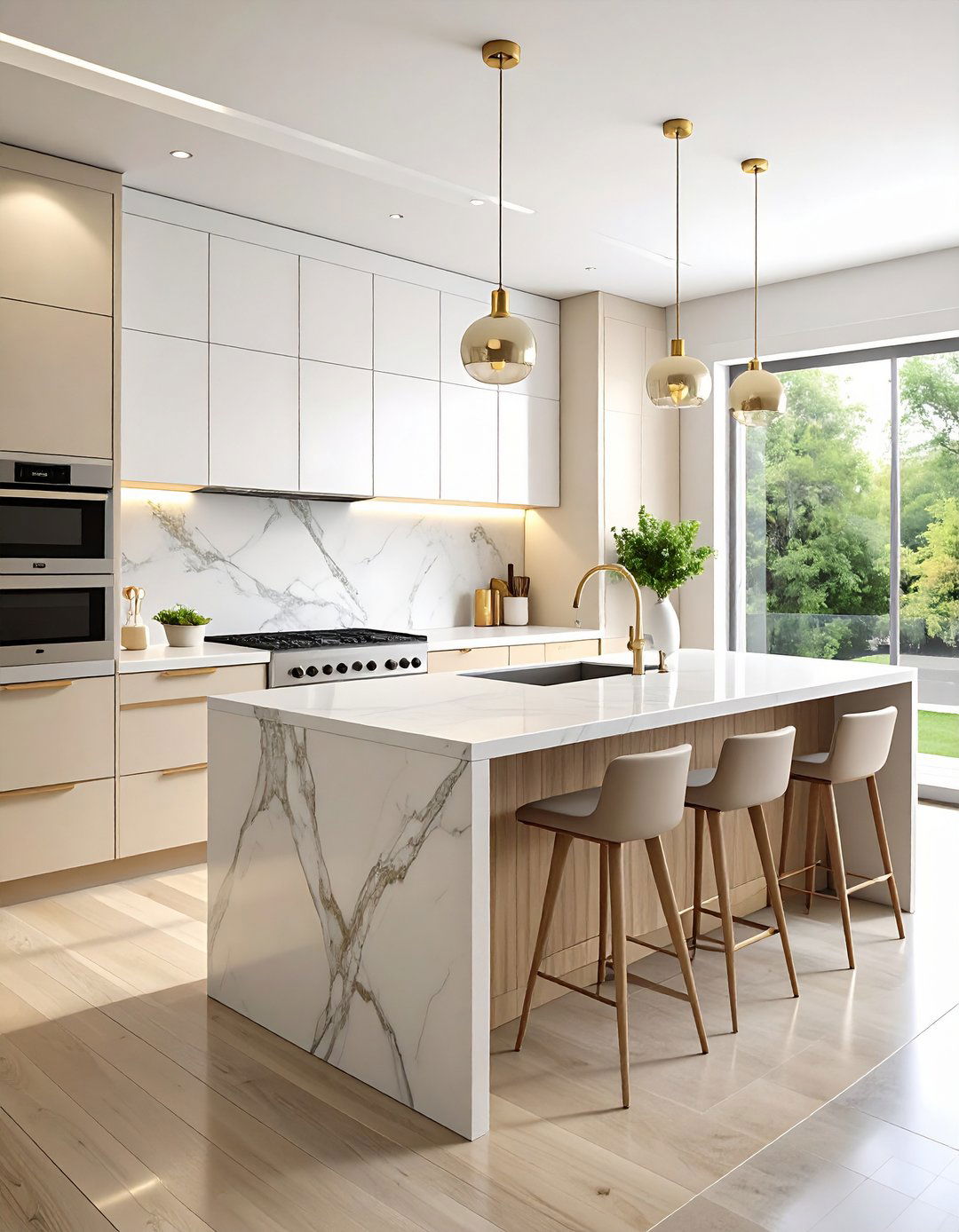
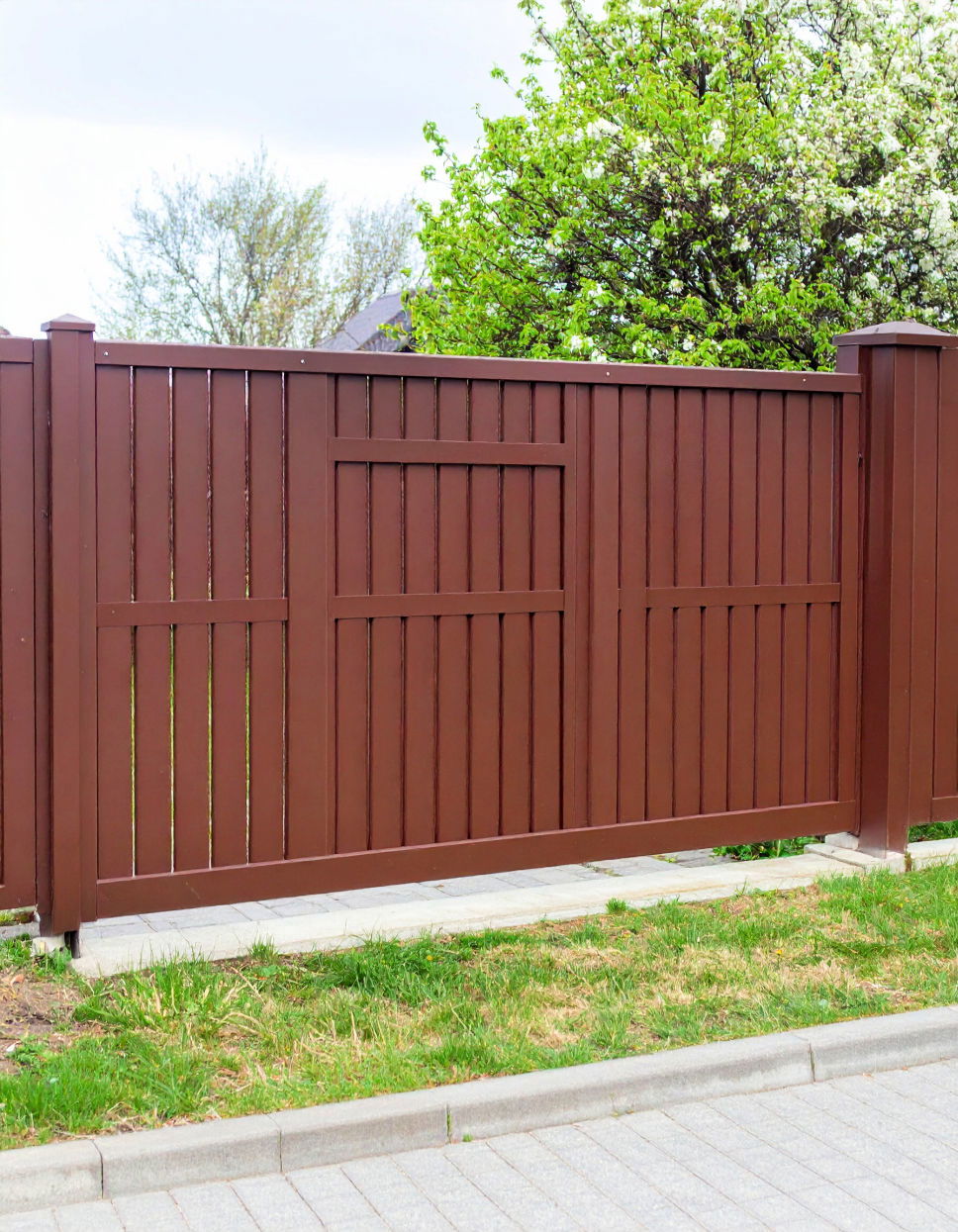

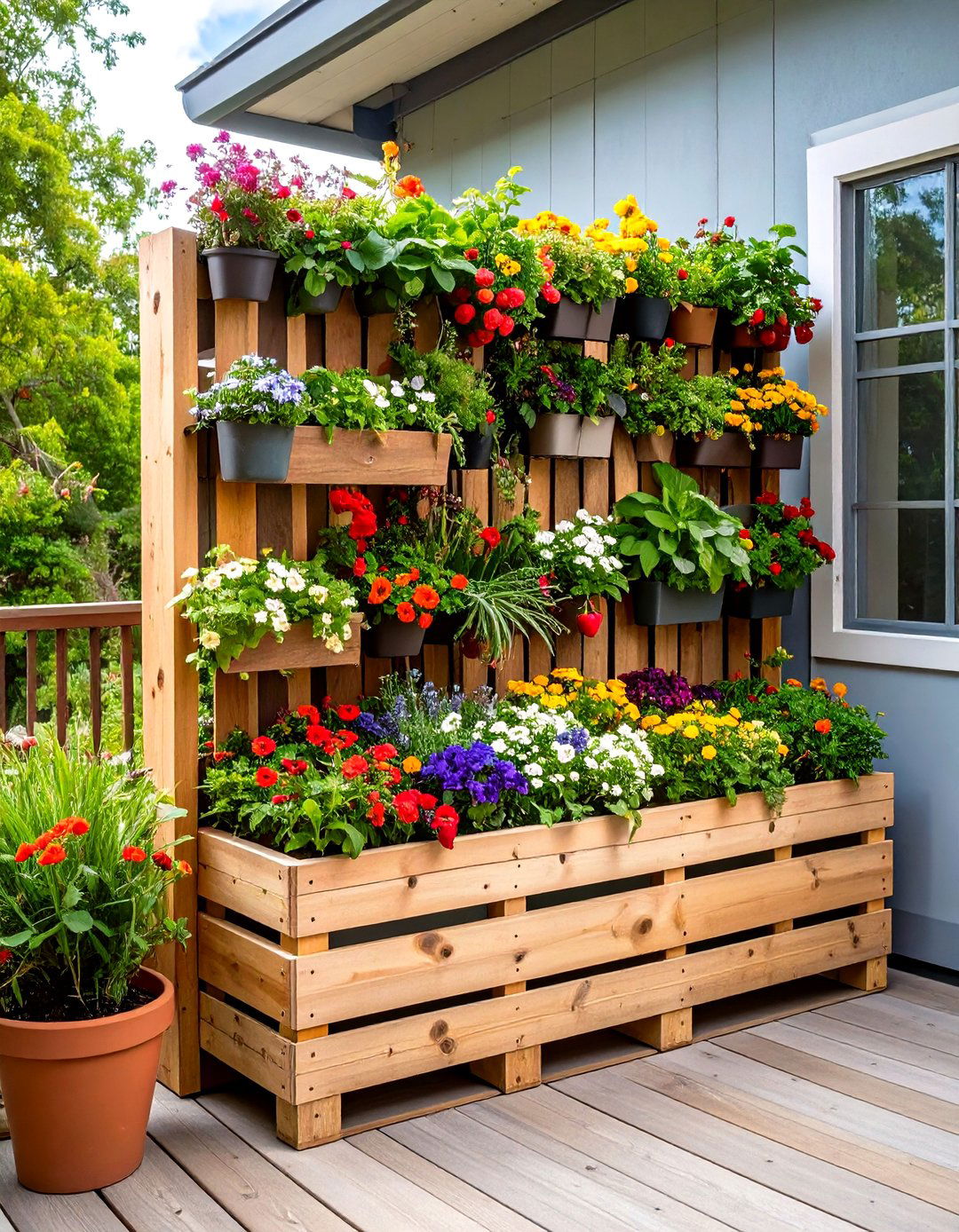
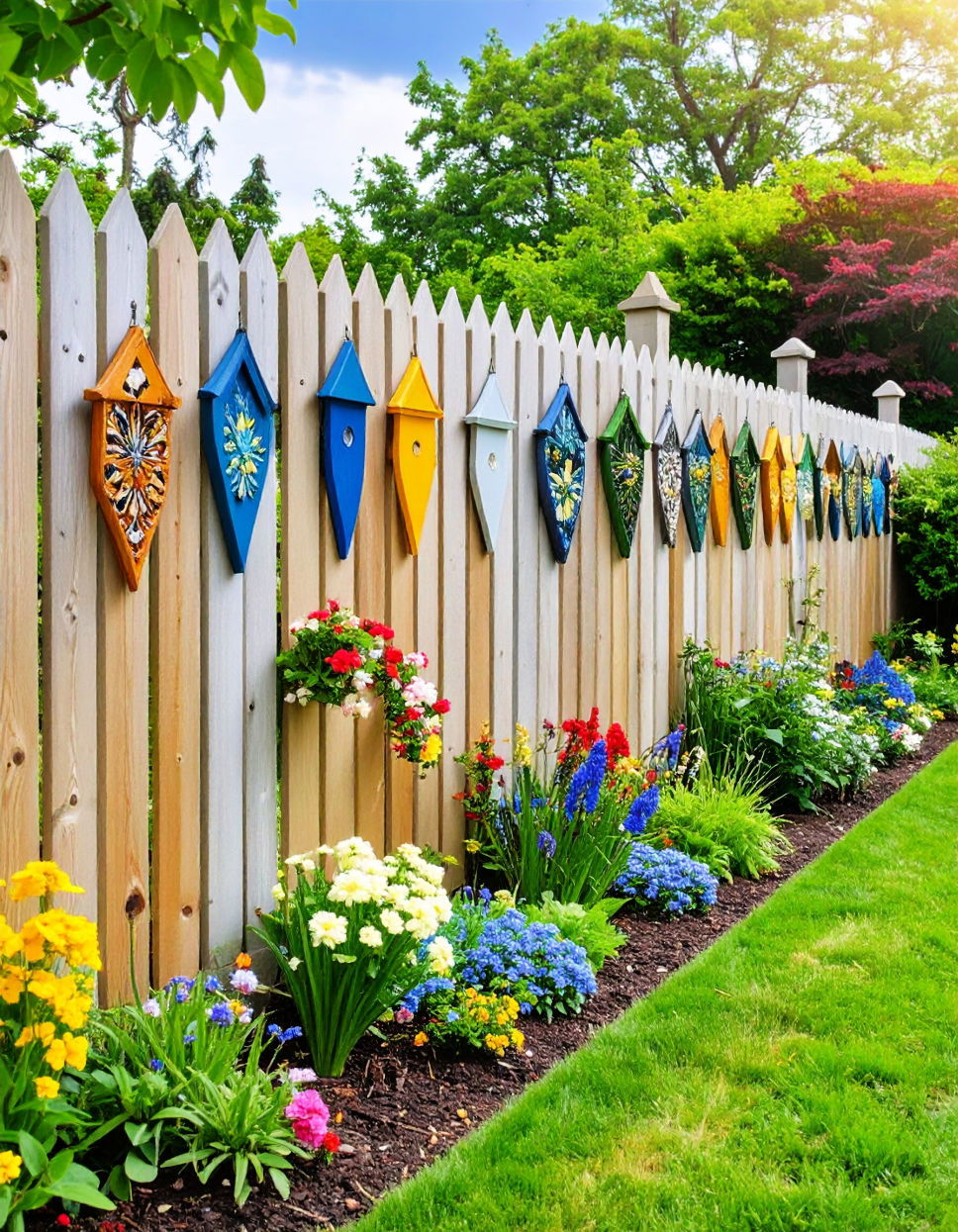
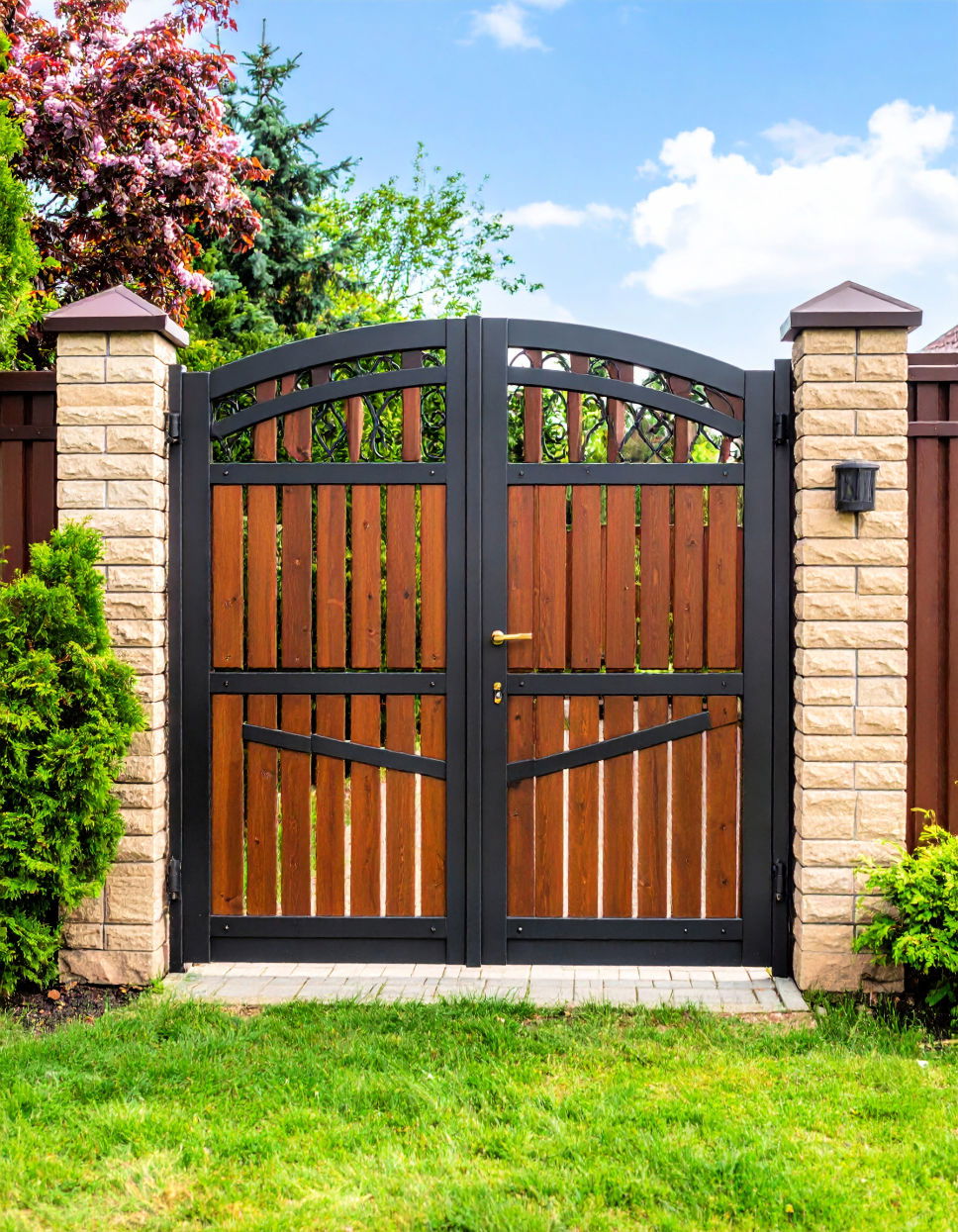
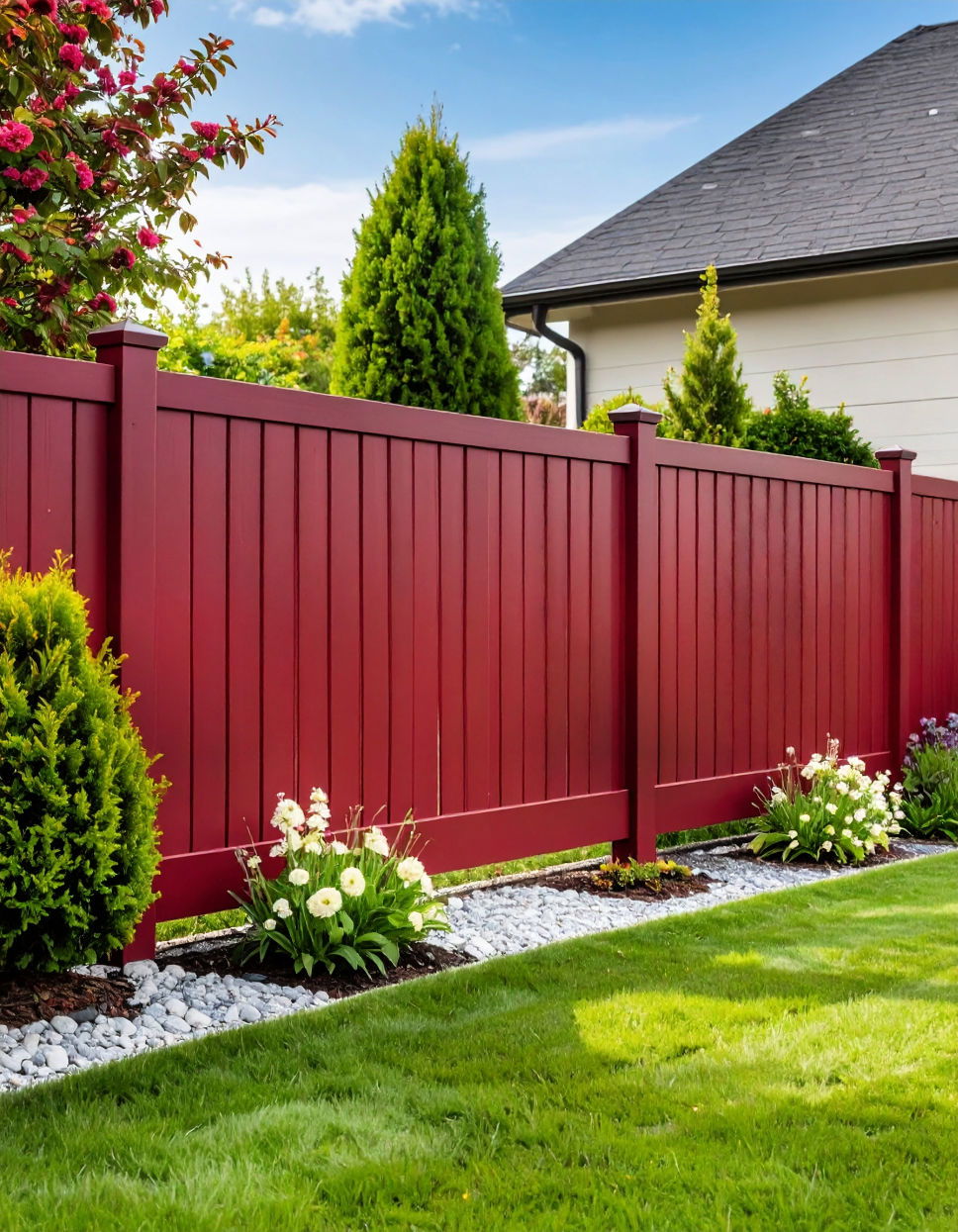
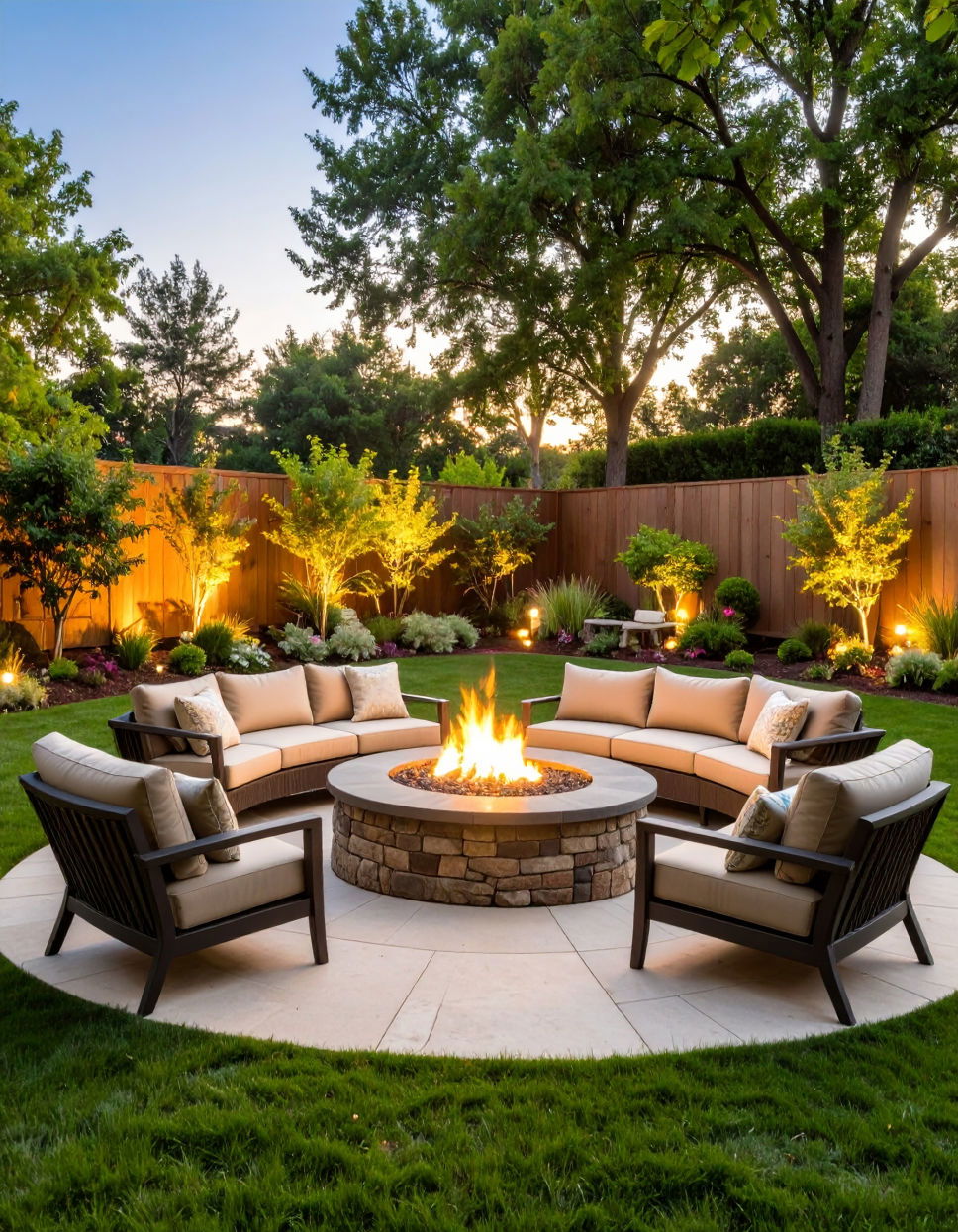
Leave a Reply